World Student Christian Federation Europe Region Ecumenical Journal, 2013/Solidarity
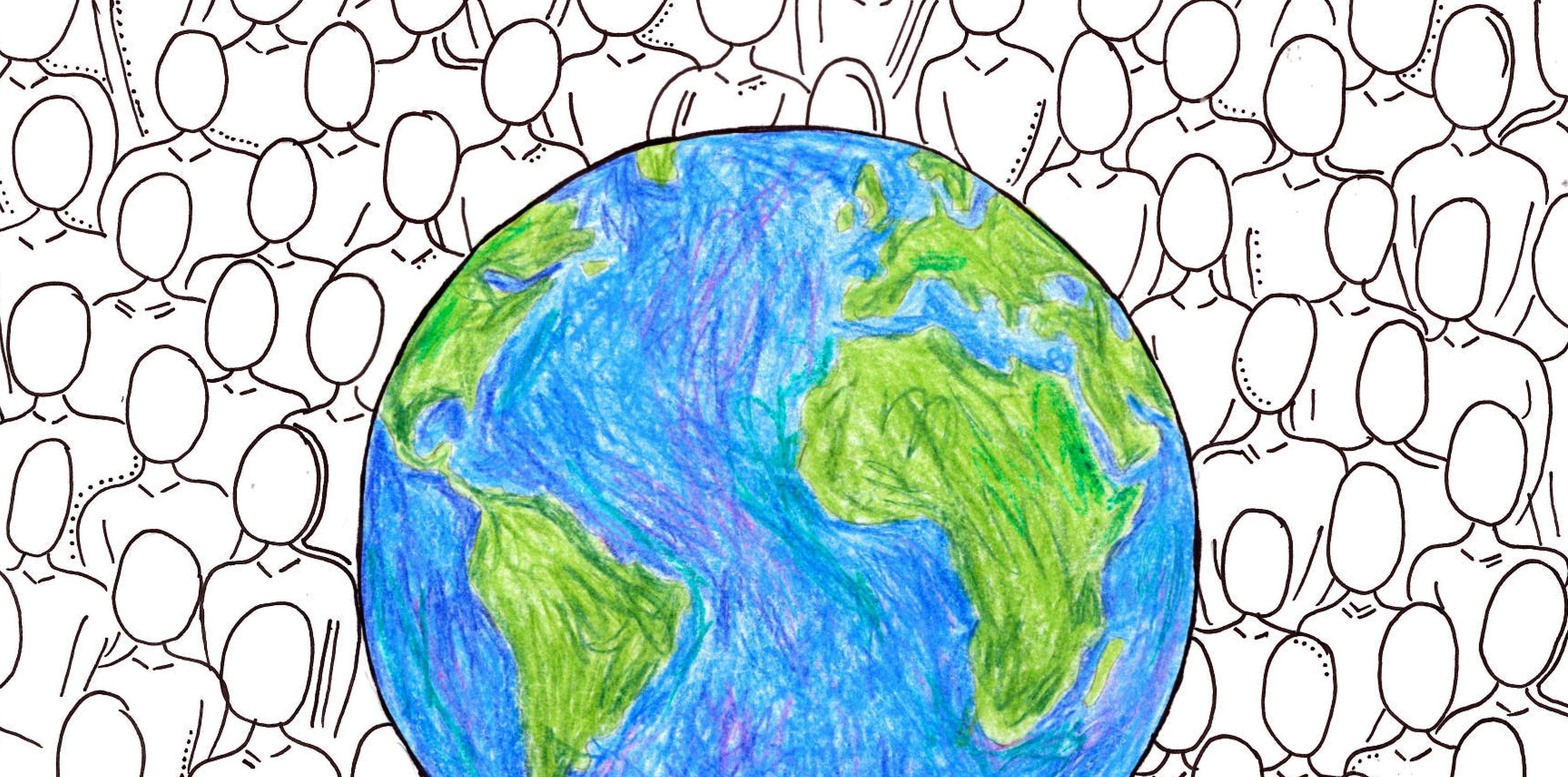
31
Who is my neighbour?
Mozaik (established in 1992) is the ecumenical journal of the World Student Christian Federation (WSCF, 1895) Europe Region, published two to three times a year. It aims to reflect the wide variety of opinions and viewpoints present among the different Student Christian Movements (SCMs) in ecumenical dialogue. You can find us Online at wscf-europe.org.
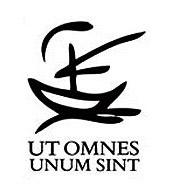
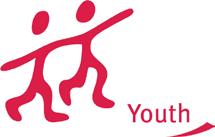
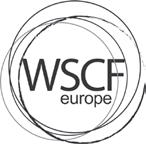
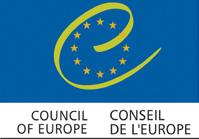
This issue of Mozaik follows the Solidarity conference “Who is my Neighbour?” which was jointly organized by WSCF Europe and Religions for Peace - European Inter-Faith Youth Network. The conference was supported by the European Youth Foundation of the Council of Europe. The contents of this publication reflects the views only of the authors and not the opinions or positions of WSCF as a whole, the editorial board, Religions for Peace – European Inter-Faith Youth Network, or the Council of Europe. Neither the Council or Europe, nor the other donors can be held responsible for any use that may be made of the information contained therein.
Editor-in-Chief:
Paweł Pustelnik (Cardiff, UK)
Editor:
Miro Pastorek (Slovakia)
Art Editor:
Mária Bradovková (Slovakia)
Address:
Storkower Straße 158 #710 D-10407
Berlin, Germany
ISSN 1019–7389
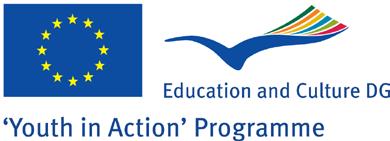
Illustrator:
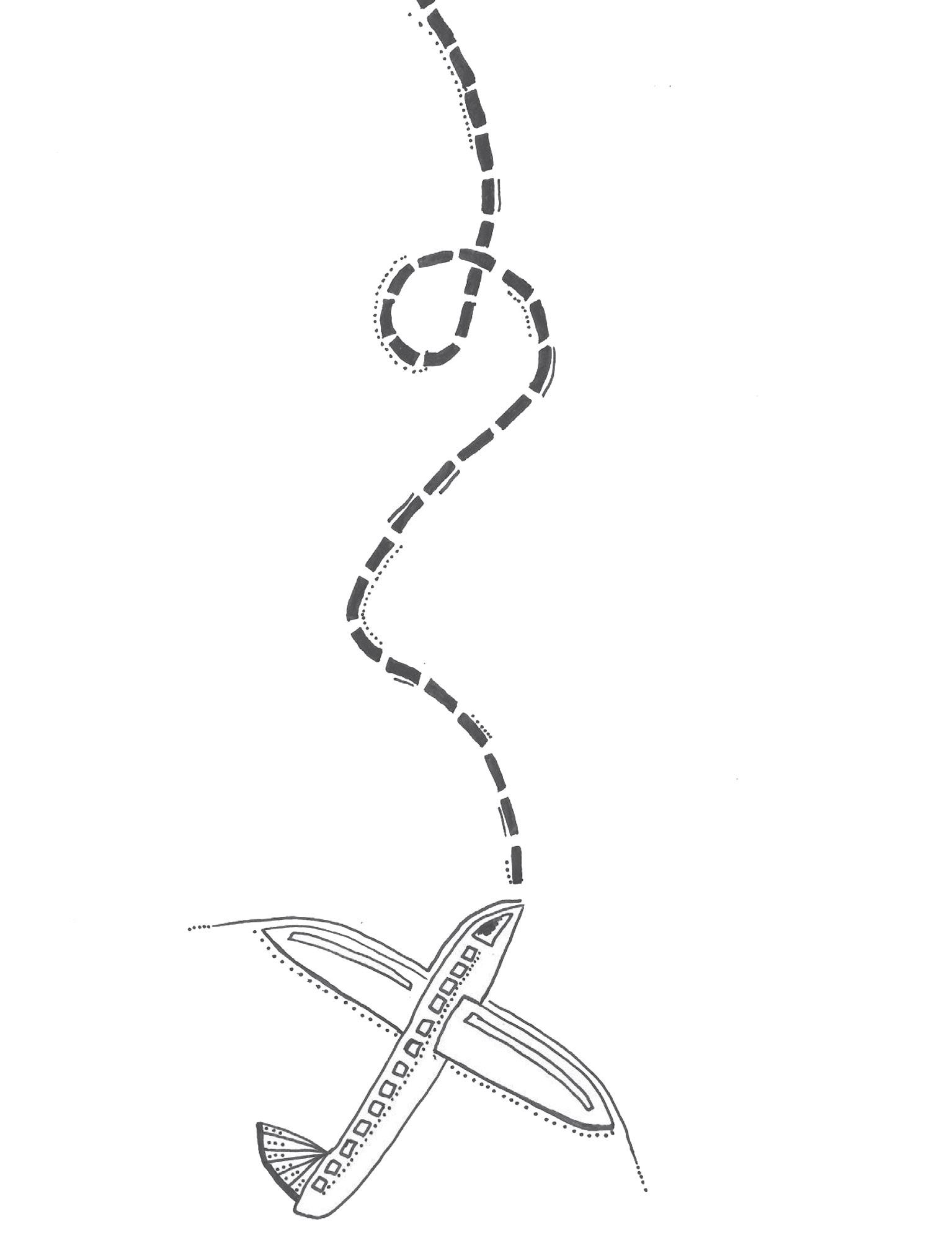
Rebecca Foster (Manchester, UK)
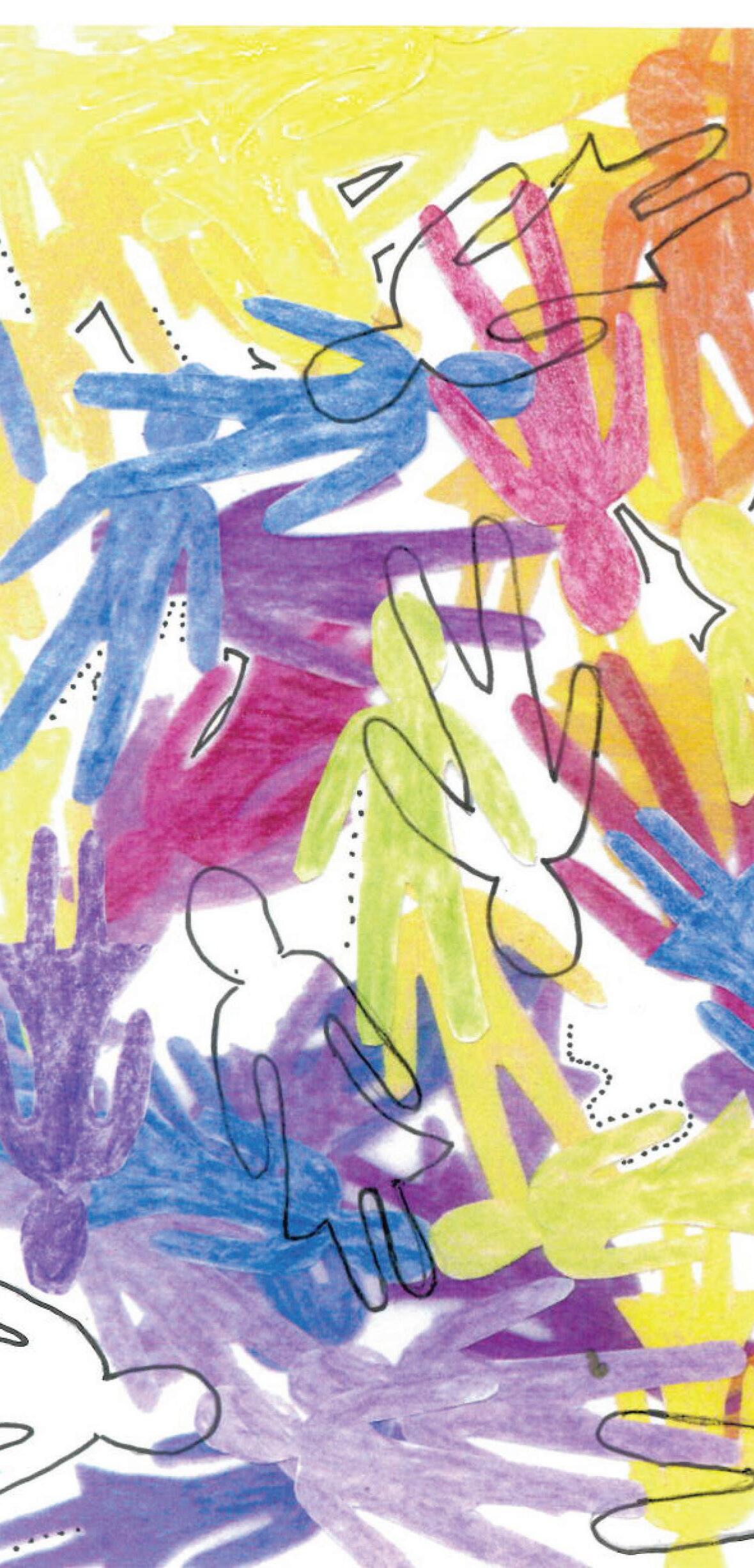
For if you love those who love you, what reward do you have? Do not even the tax collectors do the same? And if you greet only your brothers, what more are you doing than others? Do not even the Gentiles do the same?
I learned very quickly that when you emigrate, you lose the crutches that have been your support; you must begin from zero, because the past is erased with a single stroke and no one cares where you’re from or what you did before.
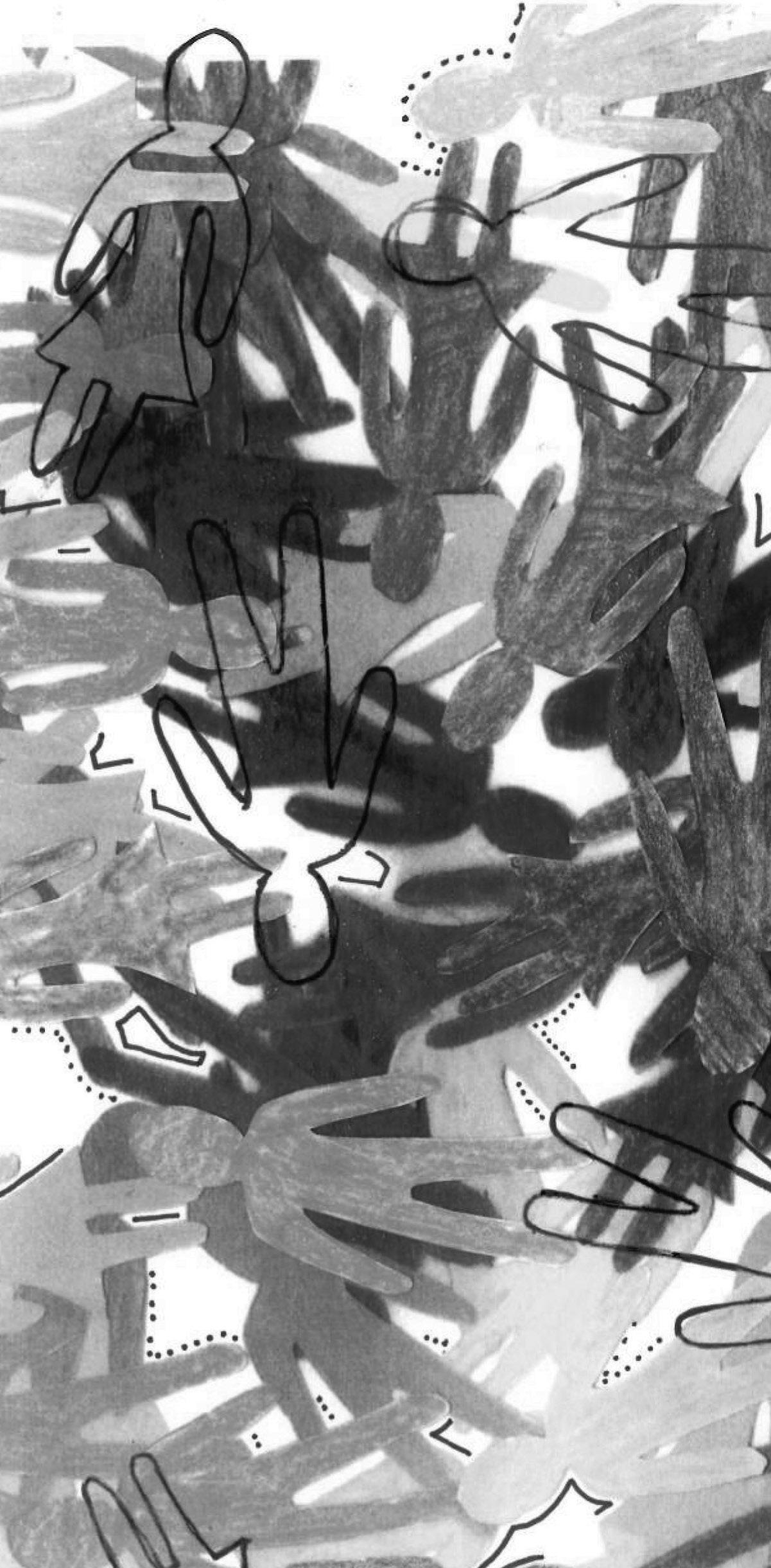
Don't forget to show hospitality to strangers, for some who have done this have entertained angels without realizing it!
― Hebrews 13: 2
1 Mozaik 31
― Matthew 5:46-47
― Isabel Allende, Paula
Sometimes the context we live in is taken for granted. A reflection about the people who surround you is crucial and probably the first step to overcome prejudices.

The world is becoming hypermobile. Some years ago migration was associated mostly with people’s mass movement related to wars or with a little number of experts moving from one country to another. Today, migration has many new facets. At many WSCF events at the ice-breakers session we ask people to raise their hands if they came from the country where they live, if they used to live abroad or if they live in the same place where they parents or grandparents used to live. The picture, perhaps a bit blurred, that we are getting usually shows a highly mobile group with one or more international experiences, showing that almost nobody lives in the place where their parents (not to mention grandparents!) live. Paradoxically, in the reality where cultures intersect and mingle people can still experience xenophobic behaviours of diverse characters.
In this issue we are trying to look closer at the European perspectives. The conference, which covered the issues related to xenophobia was organized in Italy – a country known for its rich history full of migrations and new neighbours. Recently, the Italian coasts have become an area of conflict between dreams and reality. The African compasses calibrated for the promised land point towards North, which means that more and more people of all ages head to Italy hoping for a better life. This trend and the links we had in Rome made WSCF think of Italy as a perfect venue for the conference “Who is my neighbour?” An intense week is vividly described by Annika Foltin, who was co-organizing the event. Hattie Hodgson and Jo Musker offer compelling contributions related to their experiences with human trafficking and xenophobia in Great Britain. Márta Várnagyi, who was also present in Velletri as WSCF Events Coordinator, had an opportunity to talk with her Hungarian friends about xenophobia in their country. Shannon Philip asks “Why do we call ourselves Christians, men or women, gay or straight, black or white?” and tries to understand the roots of fear of the other.
There were many conclusions that we came to in Velletri. It has been an eyeopening week, for some overwhelming, but for sure worth travelling many kilometers. We are trying to give you a taste of the issues and encourage discussions in your environments. Who are YOUR neighbours?
2
EDITORIAL |31
Motion of acceptance
– Marta Gustavsson, Jonathan Wiksten
No Country for Roma People
– Márta Várnagyi
Stories of experiences of community and solidarity across lines of culture and religion
– Bashy Quraishy
Xenophobic…me?
– JoAnne Lam
The New Asylum Model in Britain and the rise of Xenophobia
– Jo Musker
Loving our neighbour? It might be more difficult than you think…
– Hattie Hodgson
Islam and immigration are no strangers to one another
– Ibrahim Mogra
Free-time activities as tools of intercultural integration
– Csaba Szikra
Am I a xenophobe?
Being a progressive Christian student today
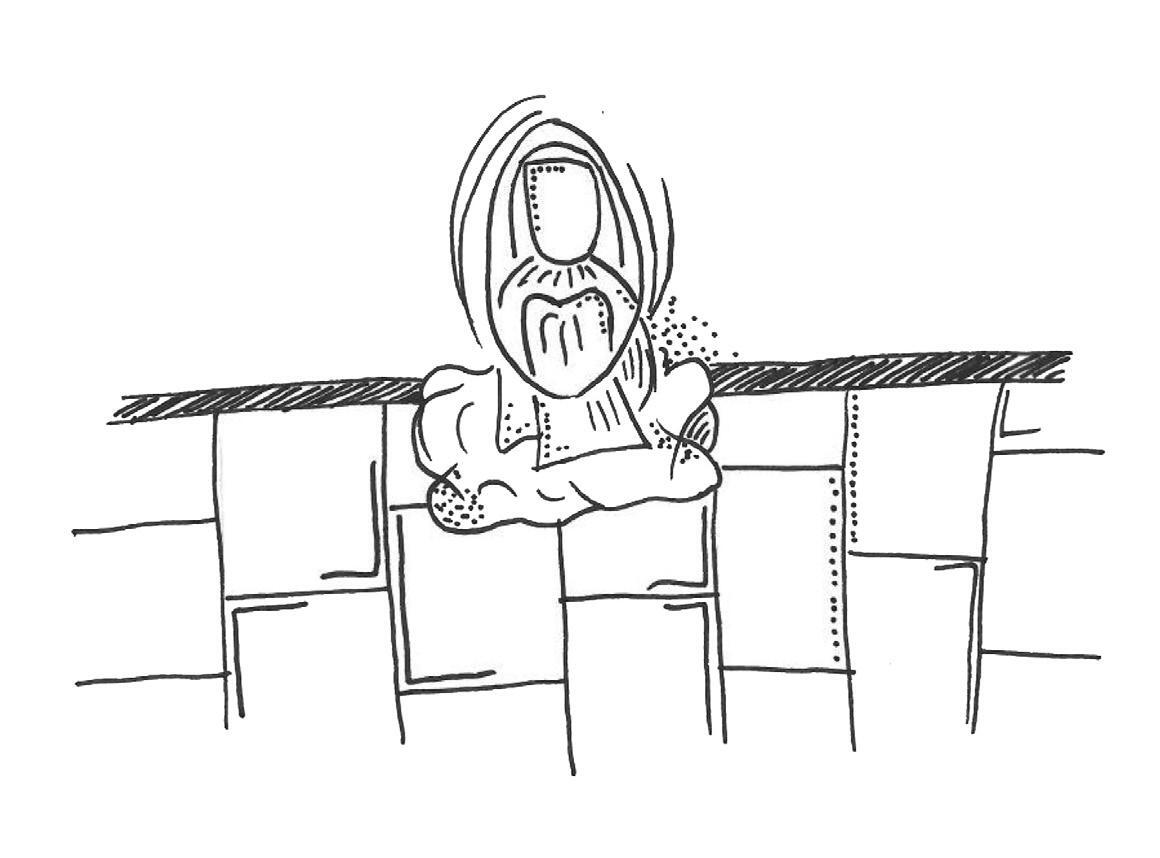
– Shannon Philip
The New Italians
– Marta Maffia
3 | Federation
Central & Eastern European SCM Training
– Viliam Latta
How is it to be in a Preparatory Committee?
– Annika Foltin
Like a Paddington bear
– Nino Kurtanidze
Refugees and the Future of Europe
– Jos Kofijberg
Green Toolbox is available NOW!
3 Mozaik 31
6 8 12 18 20 26 30 36 40 44 50 52 56 58 62 1 | Know 2 | Act
2 | Act
Open your mouth for the mute, for the rights of all who are destitute. Open your mouth, judge righteously, defend the rights of the poor and needy.
― Proverbs 31: 8-9
History shows that it is not only senseless and cruel, but also difficult to state who is a foreigner.
Claudio Magris, Danube: A Sentimental Journey from the Source to the Black Sea
Am I a xenophobe? Being a progressive Christian student today
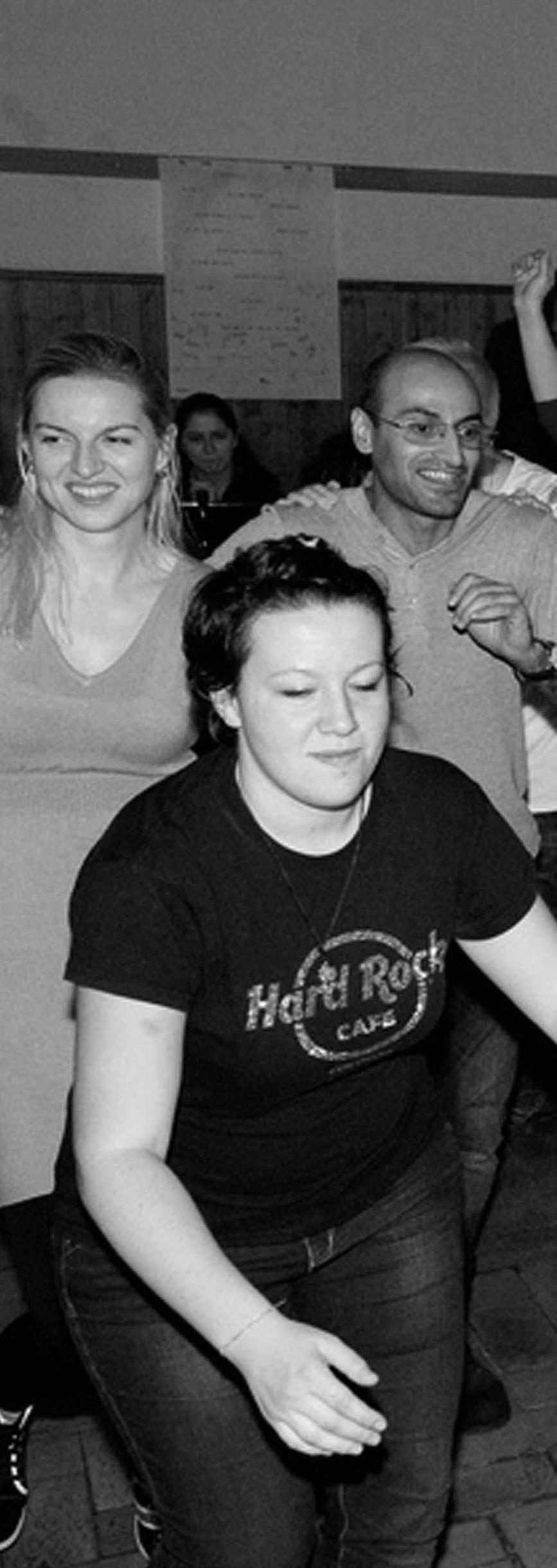
34
36
as
– Csaba
40
Free-time activities
tools of intercultural integration
Szikra
44
–
Maffia
– Shannon Philip
The New Italians
Marta
Paulius Sakalauskas
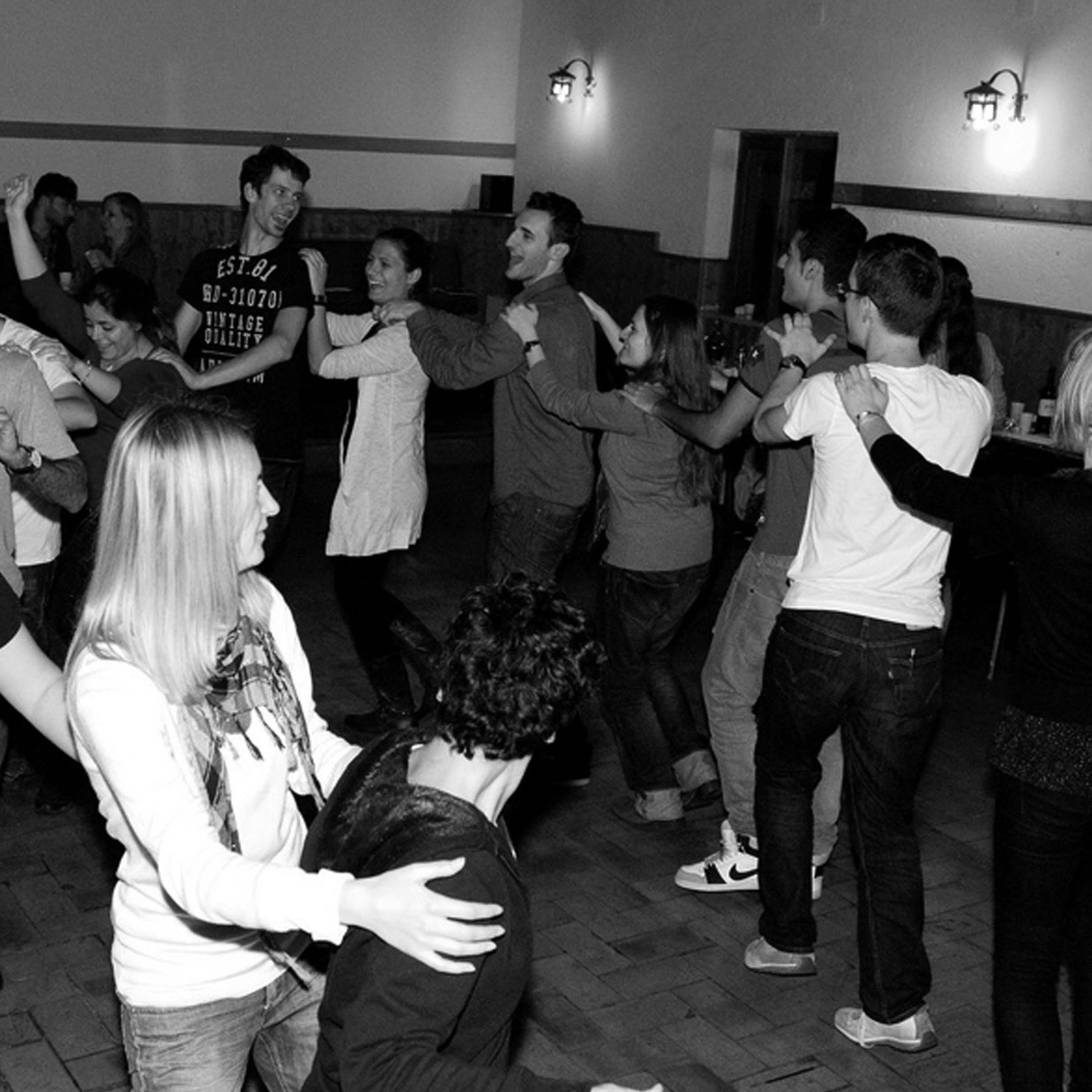 The last night in Velletri.
Csaba Szikra
The last night in Velletri.
Csaba Szikra
Free-time activities as tools of intercultural integration
Young people are playing in a lunchroom during an interfaith conference (Who is my Neighbour: Migration and Xenophobia in Europe) in Velletri, Italy. The games are fast, the commands of the leader are short and strict. Some „gentle aggressivity” is in the air. Everybody is laughing at small misunderstandings – funny language barriers are unavoidable in such a workshop.
Ihad the chance to lead this workshop as an instructor and the participants played the role of students. We took a glance at KravJunior and other free-time activities – as tools of intercultural integration.
The „original” system was designed as the official closecombat style of the Israeli Defence Forces by Imi (Imre) Lichtenfeld, a Hungarian Jew. Civilians and children involved in this work as well. Krav-maga is a self-defence and personality development method that could play a definite role in education and recreation. Lichtenfeld’s Krav-maga is aimed at students handling conflicts, their interpersonal skills and assertive communication. It helps them with developing fighting skills and preventing attacks on streets, in schools and pubs, clubs etc. Although it sounds strange to teach kids and teens the craft of military combat, the junior version, so-called KravJunior (their age-related versions are KravKid and KravTeen) with decreased level of aggression can be
36
a unique combination for learning self defence, playing games and getting disciplined. Dealing with controlled aggression contributes to self-control. Furthermore, it contributes to multiculturalism through organising multi-ethnical and multi-religious groups.
Right now, I teach several bilingual (English-Hungarian), multi-religious and multi-ethnical Krav-maga and KravJunior groups in a Jewish pre-school (Benjamin PreSchool), in a playhouse (Noha Studio) and mainly in the Bálint Community House (the official Jewish community house of Budapest): Christian, Jewish, Muslim and Buddhist guys work together. Children and teens with
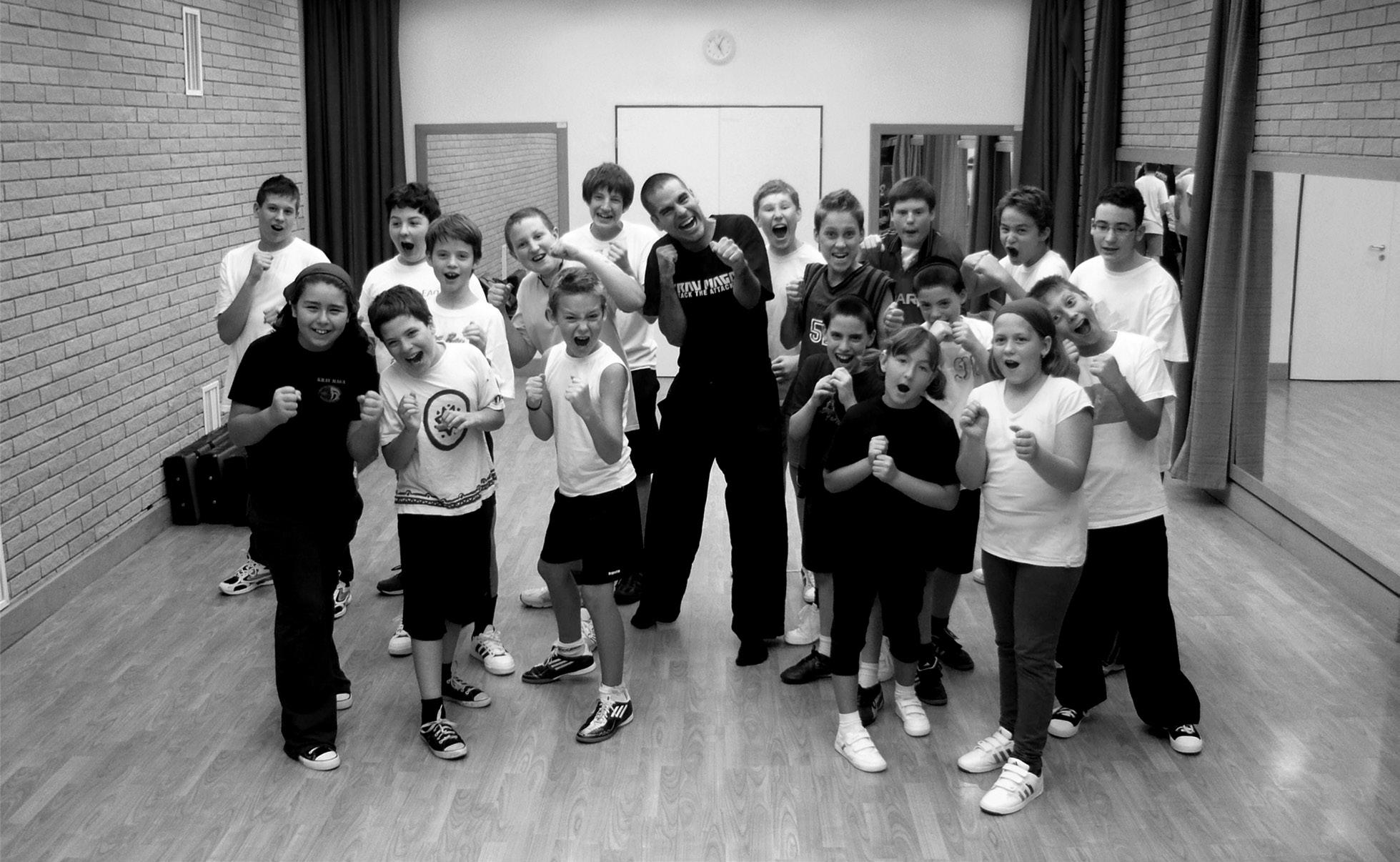
Roma, Hungarian, Vietnamese, Georgian, French, American or other background play together without any conflict. And this is not only because of the „fantastic” Krav-maga itself.
We are not magicians
As a matter of fact I can say that all kind of common work in mixed groups can help the intercultural dialogue with or without sport-elements: for example singing, fishing or simply playing basketball. On the one hand, two American psychologists, Sherif and Sherifi proved
37 Mozaik 31
Among my KravTeen students in Budapest
Csaba Szikra
that with the conscious work of well-educated teachers, kids are capable to break down the borders between the cultures. What is more, they also proved that without this consciousness the situation can only worsen. Finally, under the supervision of an under-educated or racist educator the same mixed children group could become intolerant while playing with children coming from minorities.
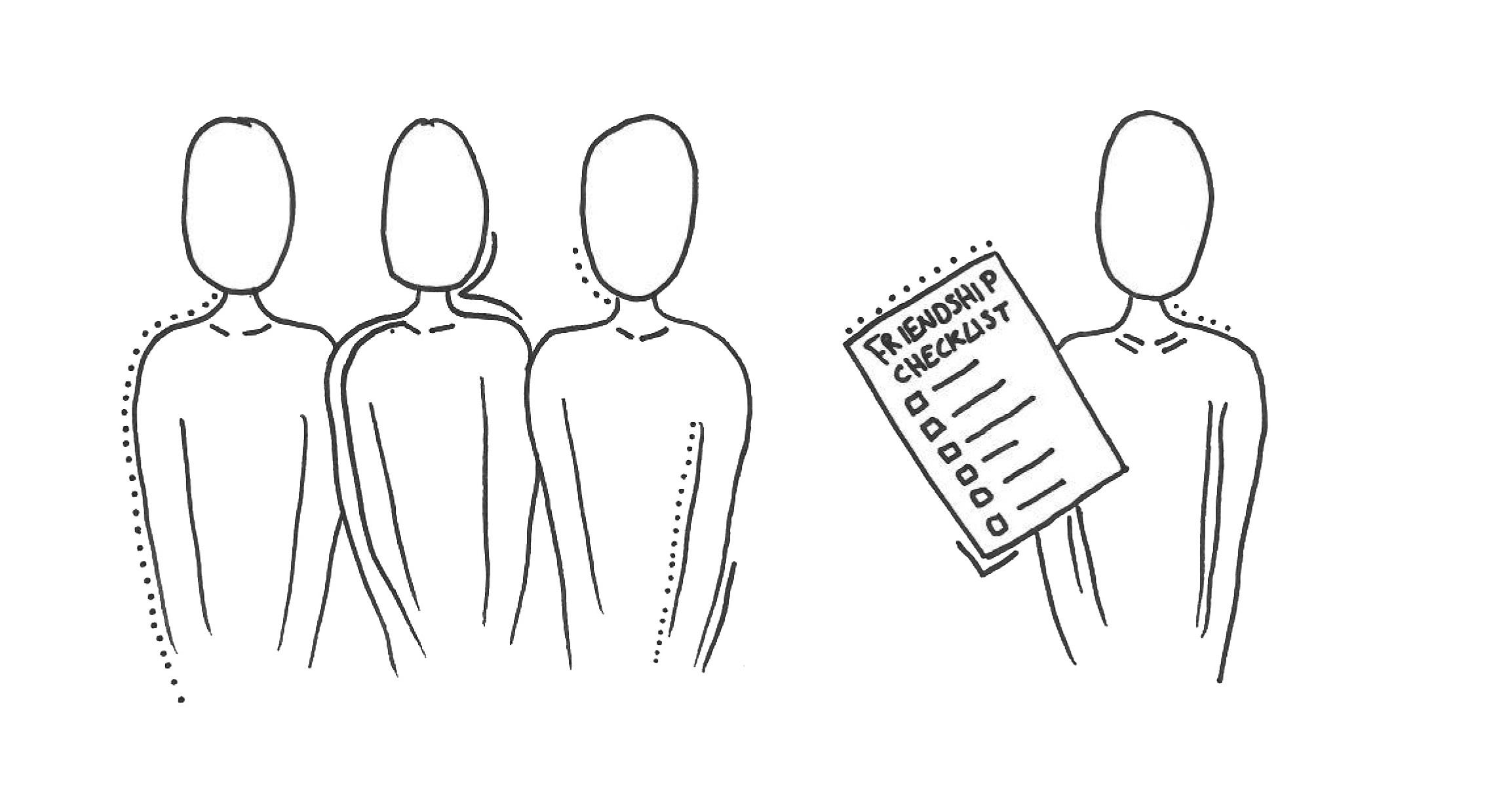
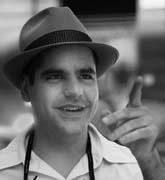
In a nutshell, if you want to help integration of minorities in your country just find a hobby what you could teach kids with different ethnic background and go to the next community house. Start it! �
Answering participants’ questions, Mr. Bashy Quaraishy, the head of the European Jewish-Muslim Platform said in his workshop during the conference that the meaning of multicultural youth-work is the voluntarism and community based activity. Schools are not always open to gain new experiences with multicultural children groups, but the modern European states need this openness. He suggested that the community houses and camps could be places for the free-time activities. In my opinion, he is right. I also tried to found co-operate state schools but the official Eastern-European schooling is not prepared yet to such a big change: organising multicultural events and clubs for a better future.
my country Hungary, my city Budapest and I like to travel and meet people around the world.
My backpack is filled with my roots, voices, sounds, fragrances, pictures of people and houses. Now I want to see and experience more and more and later when I will be a grandpa I want to tell all of the stories to my grandchildren.
38
Csaba Szikra. I’m a a social worker and a professional intercultural vagabond. I belive in God and children. I’m proud of my culture,
i Muzafer Sherif and Carolyn W. Sherif, "Ingroup and intergroup relations." Chapter 19 in James O. Whittaker (Ed.), Introduction to Psychology. Philadelphia: Saunders, 1965.
Csaba Szikra: Free-time activities as tools of intercultural integration
Having fun with our "neighbours".
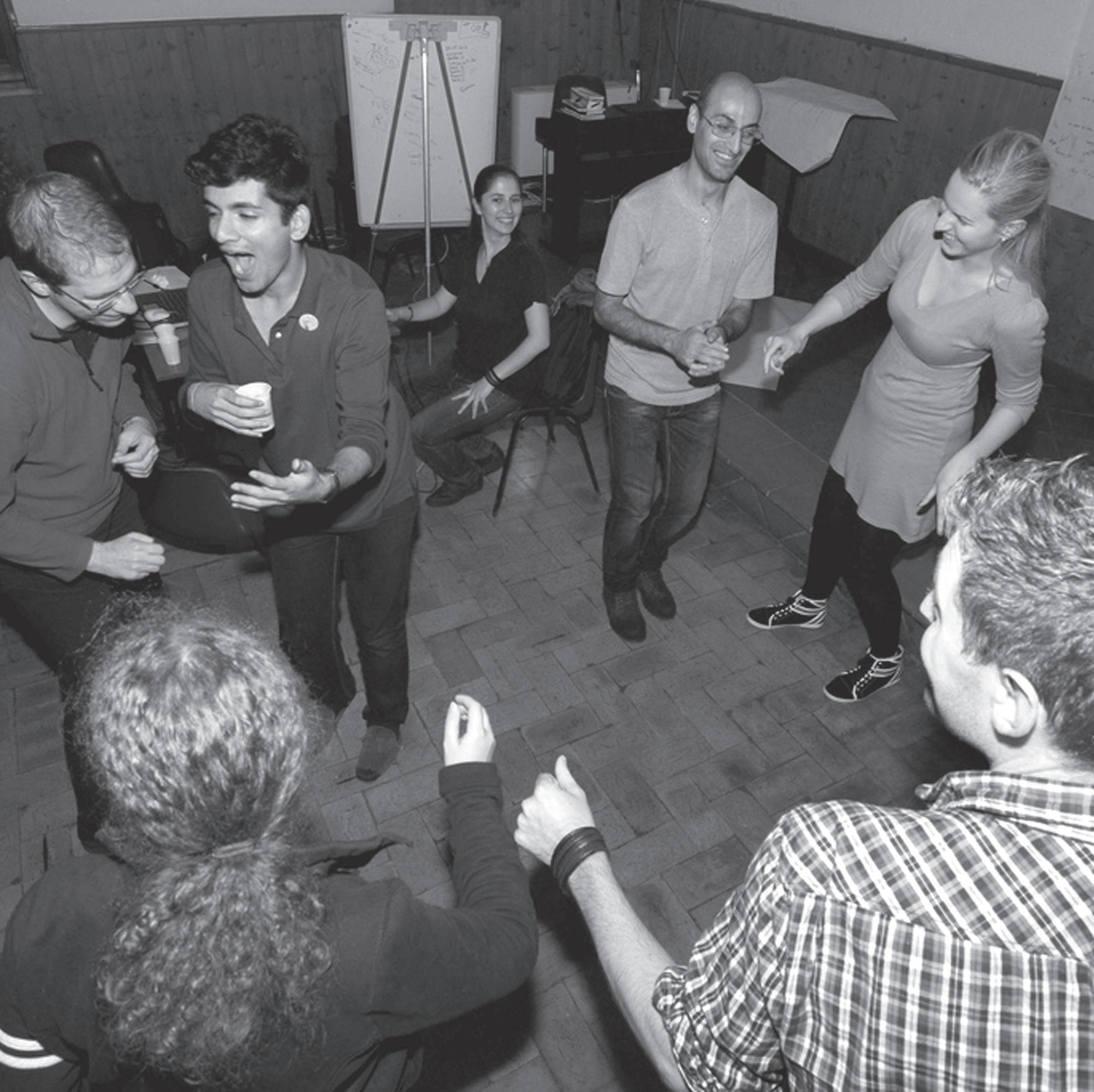
39 Mozaik 31
Paulius Sakalauskas
Shannon Philipp
Am I a xenophobe? Being a progressive Christian student today
‘We are all racists’. This was one of the most startling phrases that has remained with me after the WSCF–Europe’s conference on Xenophobia and Migration in Velletri, Italy. This was an interfaith event that WSCFEurope organised in cooperation with the European Inter-Faith Youth Network of Religions for Peace (EIYNRfP) This idea that I as a moderate, young and modern Christian could be a racist in anyway is unsettling and probably unbelievable for me and probably for several other young students like me. But there is some bitter truth in that matter.
The word ‘xenophobia’ comes from the Greek work ‘Xenon’ meaning ‘the other’ and ‘phobia’ meaning fear. This word captures the essence of racism which lies in the fear of things that are different from us or the ‘other’. Sociologists have long been arguing that we create ourselves, our identities and our thinking based on the ‘other’. We think in relational terms. This becomes quite clear if we start to question where our identities come from – why do we call ourselves Christians, men or women, gay or straight, black or white? It partly comes from the idea that if we are a man we are by default not a woman, if we are white we are by default not black, if we are Italian we are probably not French or British and so on. Academics point out that our lived experiences ‘fill’ these identities to make it seem like they are natural and real (Butler, 1993, Connell, 2005 Anderson, 2006).
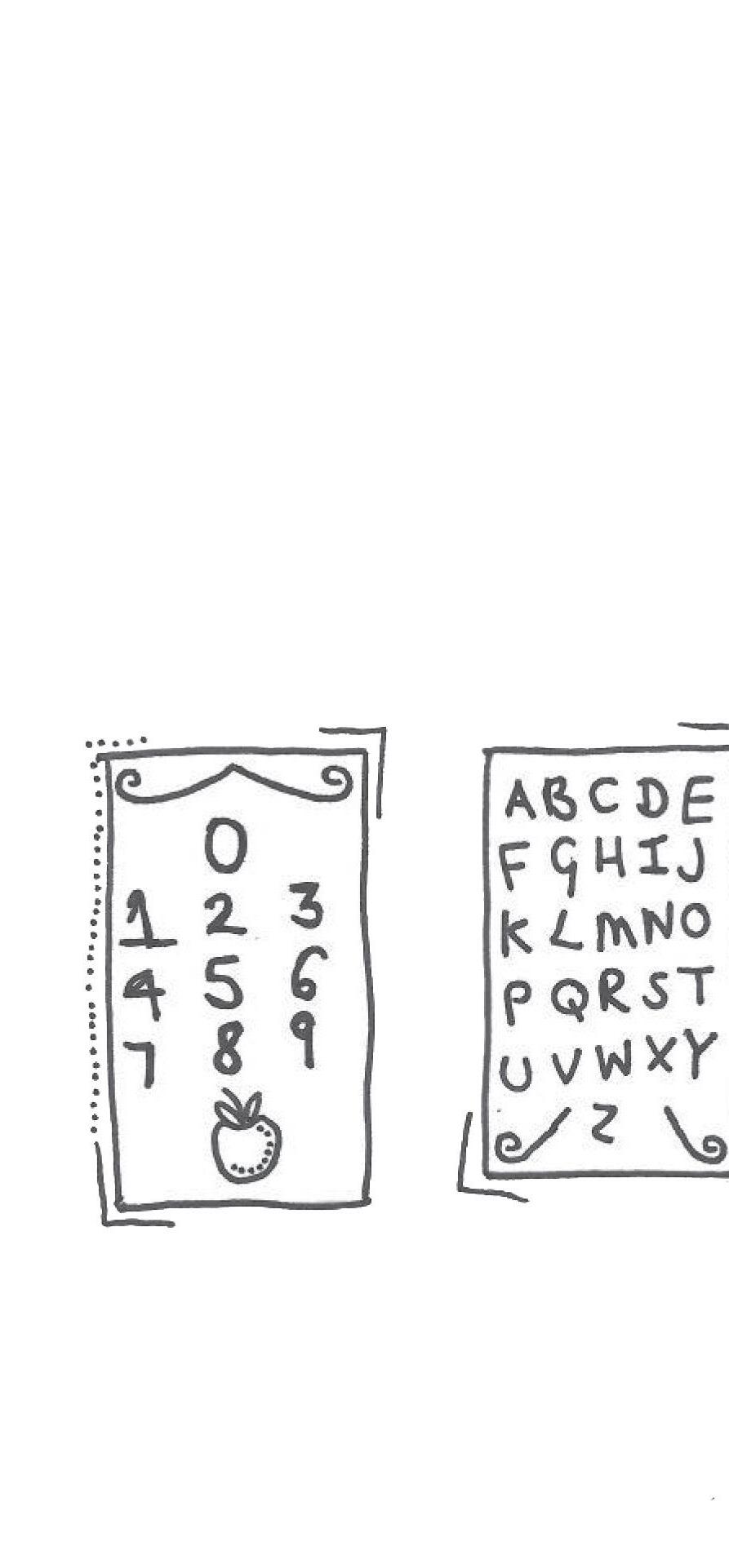
40
This is also what happens with Christianity. We are so obsessed at defining what our religion is and creating symbology around it to fill our religious identity,
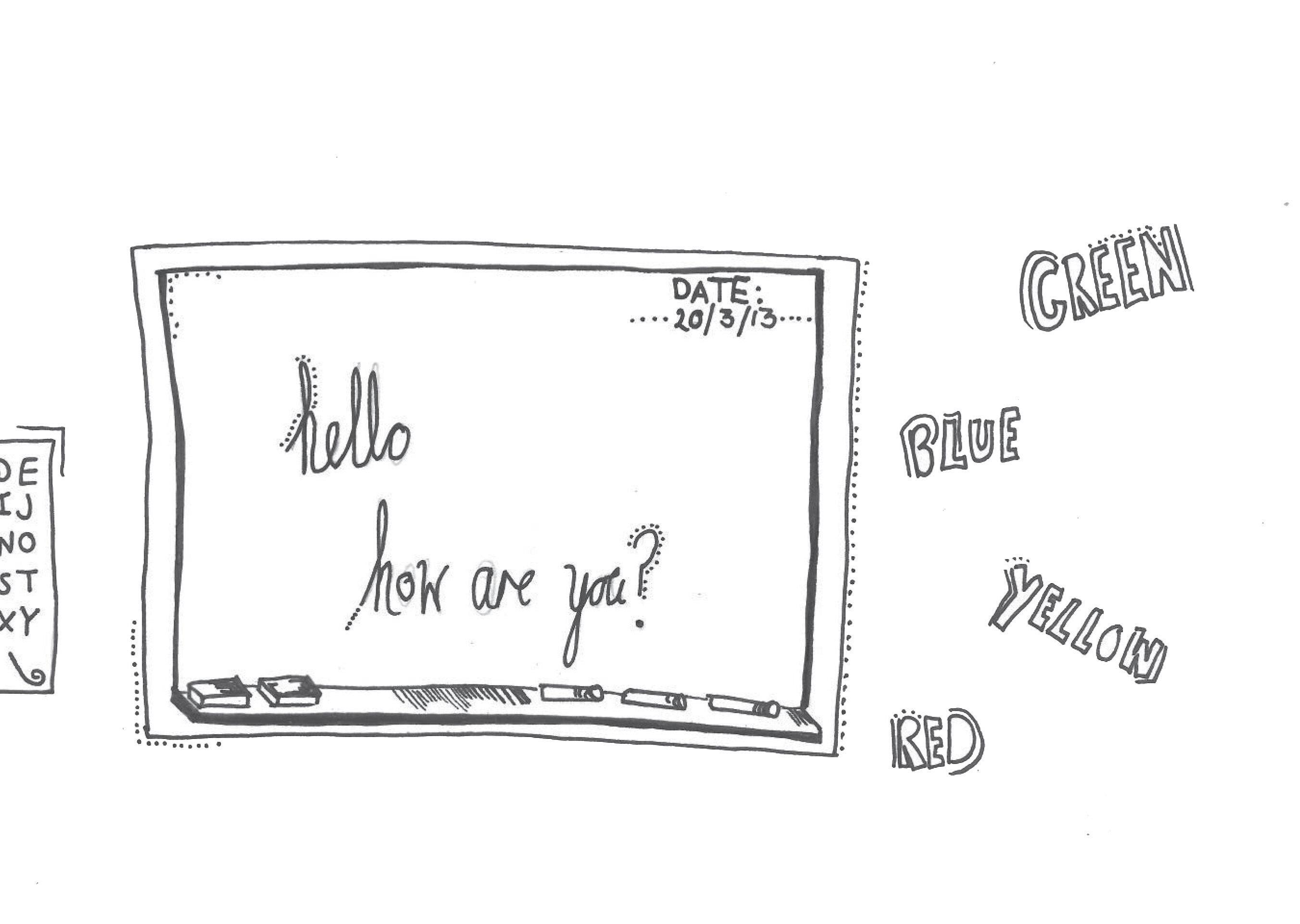
41 Mozaik 31
We define ourselves as French or Italians or British by eating certain food, living in a certain country, dressing a certain way and just more generally accepting a certain social model of thinking and behaving. That is where the problem begins.
constructions that occur in our societies everyday. The British man is justified in thinking that the Polish man is different from him and is the ‘other’. Any attempt of the Polish man to also, for example, drink tea, speak English, eat ‘English’ food etc. threatens the English man’s construction of himself. If the Polish man can also do exactly the same thing, then who or what is the British man?
When we start to think and fill our identities with certain ‘realities’ like calling ourselves ‘men’, ‘British’, ‘middle class’ etc – we also start creating the ‘other’ – all the people who are not British, not men nor middle class. We also think and act out our identities through what we say, think and consume. This is what one of the pioneering feminist Simone de Beauvoir wrote about that ‘One is not born a woman but becomes one’ (Butler, 1993). Of course there are biological differences but these are always exaggerated by our socially constructed identities. It is de Beauvoir’s idea of ‘becoming’ something and someone that also creates the other who is different from us. If we try to expand this argument, everything we do is an attempt to create and justify our constructed identities. The ‘outsider’ who is considered to be different from us has to be kept at a distance or else they could attack our constructed identity. The ‘other’ becomes a threat. To give a very practical example, there is an over emphasis in England that the stereotype of the ‘Polish plumber’ is somehow different to the ‘British man’ because they eat different food, drink different drinks and speak another language. Keeping the Polish man away from the idea of the ‘British man’ not only defines who a British man is but also defines the Polish man. This simplistic example can help shed light on some of the very complex social
Xenophobia stems from the attempts to defend our own created identities whilst ‘othering’ contrasting identities that threaten ours. Our identities are so vulnerable that we ourselves do not really believe them and have to keep trying to physically live them out. If a ‘French woman’ was to move to Slovakia and speak Slovak and start living and thinking using a Slovakian frame of life – does she still remain French? What does she do to remain ‘French’? It is much easier to think of ourselves as being either one or the other and then think of the other people as fitting into one category too. It is much harder to see that we are all the same.
This is also what happens with Christianity. We are so obsessed at defining what our religion is and creating symbology around it to fill our religious identity, that we also create the ‘other’. The idea of having cermeonies and inventing ‘traditions’ give meaning to what belong to a church or a community. Religious leaders in the Church have very often used the language of threat – threat from other religions, from secular society, for minority groups etc. In today’s society, to define ourselves as Christian means that we define ourselves as not being Muslims or if we were to define ourselves as Catholic would suggest that we are probably not openly gay. Of course these identities are very useful for political and personal reasons. And it is easier to think of ourselves as only and exclusively Christians. But we also need to look beyond that. There is not that much that separates a Muslim girl form a Catholic man. Yes, they may wear different clothes and pray in slightly different ways but these are
42
Shannon Philipp: Free-time activities as tools of intercultural integration
The WSCF Europe region is committed to carry on the inspiring work that began at this conference through ground level political action.
constructions of a religious society. Of course there are some biological differences between the two, but these are often exaggerated. What is also a construction is the over exoticising of the Muslim girl for her colourful headscarf, her prayer rituals or her language. This is what a lot of us modern, young, Christians struggle with. It is easier to see people as ‘others’ or as part of a community but still remote. The more challenging part is to think about everyone, including ourselves, as living out in several constructed boxes or identities that overlap.
The WSCF and EIYN-RfP conference on Xenophobia and Migration was a starting point for students across Europe to think about the issues of xenophobia in their personal lives and in society. This was an interfaith event where Jewish, Muslim and Christian students and religious leaders were invited to disuses and reflect about the topics. The conference was divided using three thematic areas of Identity and Community, Practical Solidarity, and finally the Practical Consequences and Action Plan. The WSCF Europe region is committed to carry on the inspiring work that began at this conference through ground level political action.
One of the important things that we as members of the WSCF realized after this conference was that when we start to critically think about our faith, identities and our lives, we realize how much binds us as students and young people around Europe, rather than separates us. The title of this conference ‘Who is my neighbour’ not only allowed us to think about who our neighbour was but it also challenged me to think about where we draw our boundaries and at which point does a person become our neighbor or not.
This article is not a call to drop all our identities, no. Rather it is asking for something more radical. Can we critically question our identities and try to discover the fluidity which our constructed boxes try to restrict. Beyond that, can we try to live out this fluidity and build
a community? Identities are to be celebrated and traditions are to be practiced, but should we not always be aware of when tradition becomes dogma? Take a moment to think about where you draw the lines to your identities and start defining the ‘other’. The only way to understand ‘who my neighbour is’, is by beginning to think about where our neighbors and neighborhoods begin and why.
References:
Anderson, B. 2006, Imagined Communities: reflections on the origin and spread of nationalism. London : Verso
Butler, J, 1993, Bodies That Matter: On the Discursive Limits of Sex. London: Routledge
Connell, R. W. 2005, Masculinities. Cambridge: Polity Press. �
Shannon Philipp is the WSCF Europe Campaigns Coordinator and an International Development graduate from the University of East Anglia, UK. His personal background of being a British-Indian has made him sensitive to diversity and religious differences.
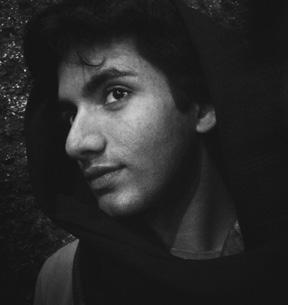
43 Mozaik 31
Marta Maffia
The New Italians
Teaching Immigrants Italian
With about five million immigrant citizens from all over the world and at least 150 languages daily spoken, Italy continues to be considered “country of recent immigration”. However, there are only 12 officially recognized linguistic minorities. In the last 40 years in Europe we witnessed the development and consequences of French Assimilation, the German model of guestworker migration and Multiculturalism in Britain. In this context, Italy has come to establish a "non-model" based on the effective and “cumbersome” concept of emergency, whose only aim is to hide the inability of our State to receive, manage and welcome migration flows.
Despite official publications by the Ministry of Education, which highlight the need for intercultural education also in Italian schools, our country is not ready to it in many aspects: political, cultural, linguistic. A Ministerial Decree of 2010 established that for requesting a long-term Residence Permit, immigrants must possess a certificate of linguistic competence of Italian as a second language (or L2 Italian), level A2 of the Common European Framework of Reference for Languages (CEFR). According to the parameters of CEFR, A2 is a basic level of linguistic competence, at which the learner can understand and use simple expressions linked to his/her immediate environment and familiar context.
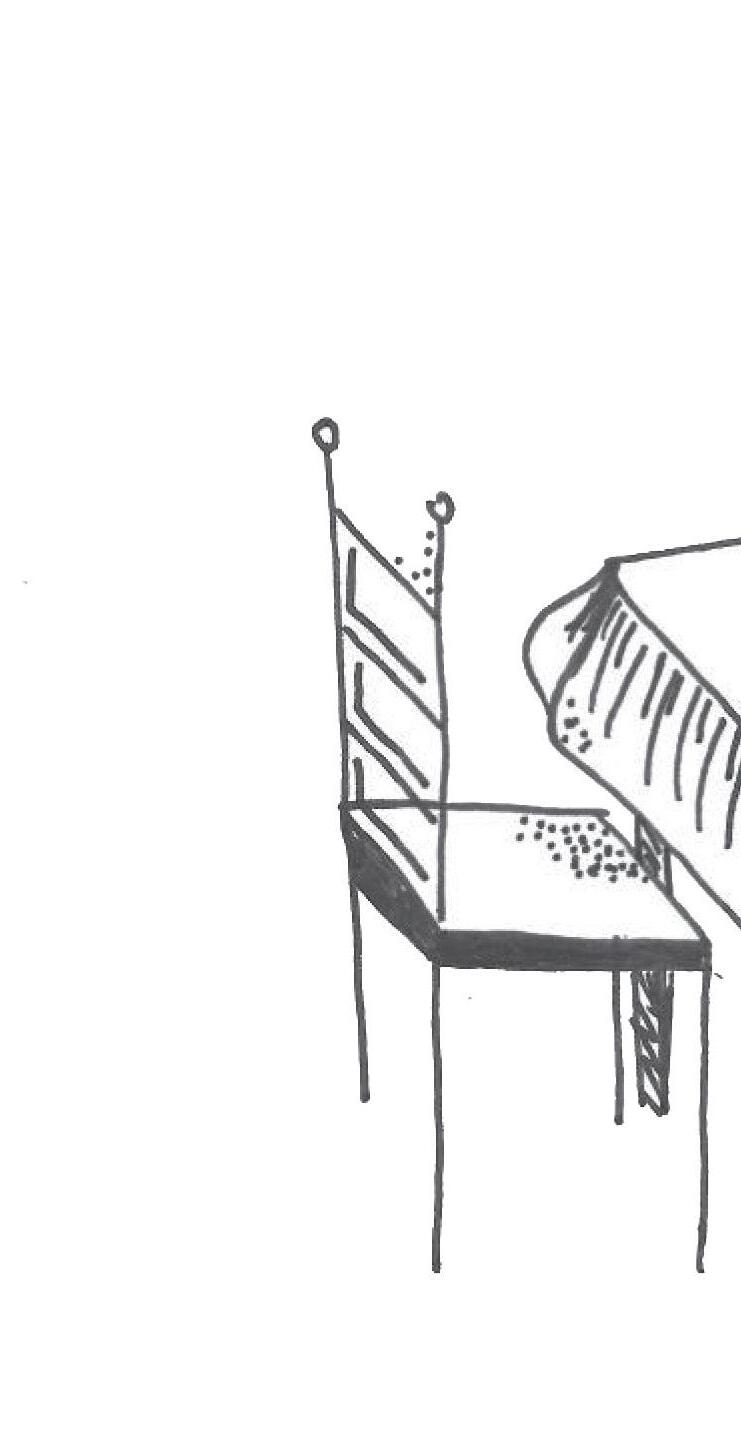
44
I see Italy as a sort of Tower of Babel, in which is not easy to understand each other. In this Tower everyone, Italians and immigrants, are now waiting for the descent of the Holy Spirit, to become able to dialogue but not to lose their
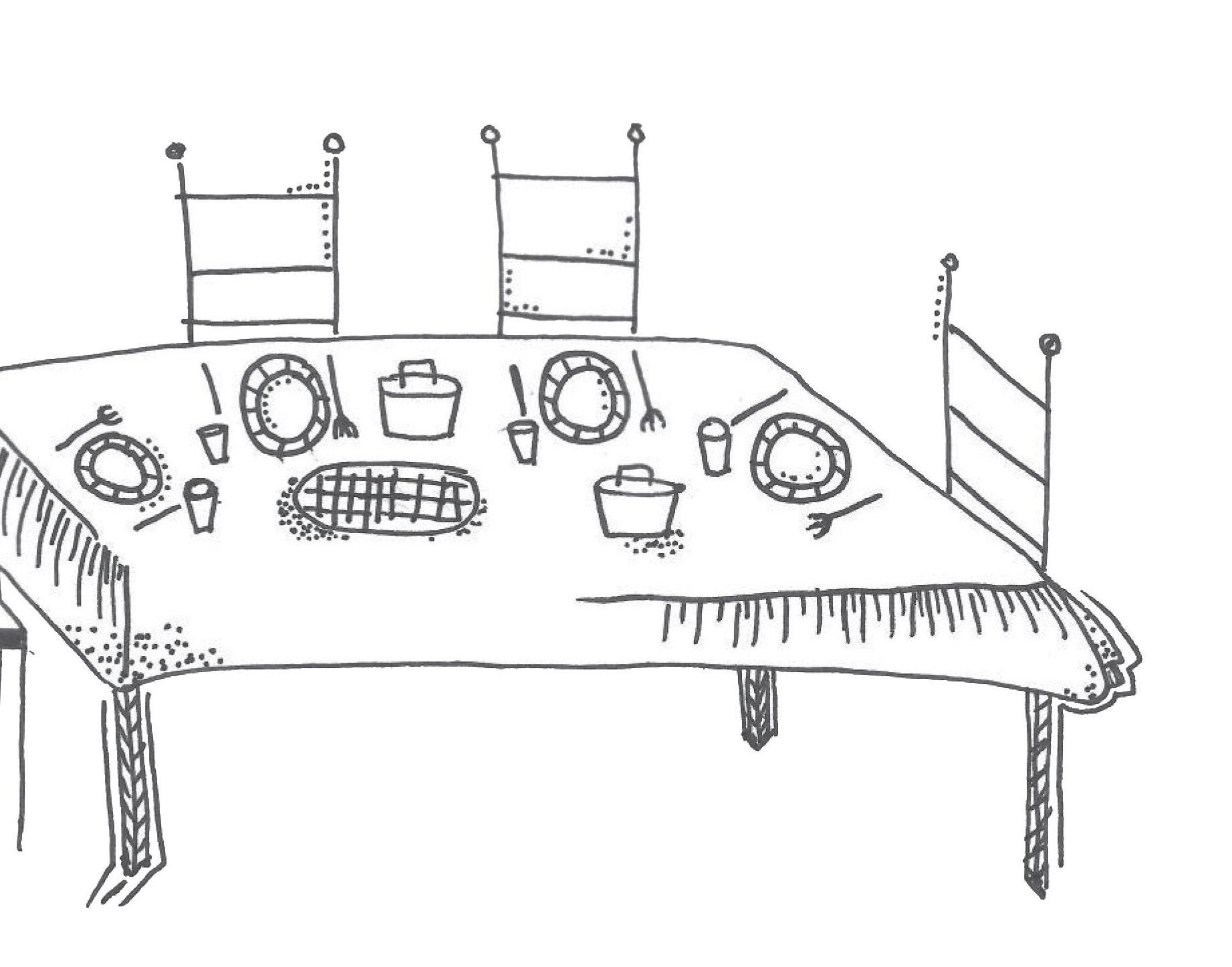
45 Mozaik 31
This Ministerial Decree, however, was not accompanied by any increase in governmental facilities and resources to provide such language training. So, once again, Italian voluntary associations and third sector organizations have to fill this void.
I grew up in an association called “Scuola di Pace” (School of Peace), in which my family has always been committed. Its principle purpose is to spread ideals of peace and nonviolence to young people in Naples, through conferences, workshops in schools, music courses, and a drama company.
measures about immigration, which normally seem so distant from us, assume, in the light of this knowledge, a different meaning. The ear tends to hear the background sound of television and its words evoke concrete images and people.
We came into contact with a complex and heterogeneous reality. The students vary by age, sex, mother tongues, patterns and levels of education, reasons for emigration, and much more. I feel lucky to have the possibility to meet so many people, from which I receive so much, giving in exchange Italian language lessons. But what does it mean for us to teach Italian, our own language in our own country?
In this context, five years ago, an Italian language school for immigrants was born. Last year about 400 students from 32 different countries attended our courses. More than 25 volunteers work together to ensure the success of this experience. There is lot to do and everyone can engage in something: giving lessons, organizing a film forum or guided visits in the city, preparing fantastic intercultural dinners or simple “tea and biscuits” to welcome students.
What does it mean to work with immigrants?
First of all, the vision of the anonymous and dangerous immigration – too often nourished by the media – gives way to the actual knowledge of people with names, ages, faces, stories, health and legal problems. The legislative
Teaching our language to immigrant students made us reflect upon the “naturalness” of speaking Italian: we became (and we still become) aware not only of the structural complexity of our language, but also of the countless ways to use it and its sociolinguistic levels, its dialect nuances. Our language, in short, took contours and characters previously unknown and sometimes unexpected. In this teaching experience and dialogue the Italian ends to transform, contaminating with the mother tongues and cultures of the students, with their "accents" and their rhythms. Slowly new Italians appear, in every sense. But teaching Italian as a second language for us means also to give students a tool to communicate and be autonomous and independent in Italy, an instrument to be known and to dialogue with Italians, to make them open to the “different from us".
On the other hand, it is necessary, when working with immigrants, to continuously question yourself not to fall into the trap of paternalism or a sterile pietism thatsometimes unconsciously - does nothing but increase the difficulties of the students. It is necessary, in other words, to have in mind what are the risks of this kind of work. It is possible to fall into the trap of folklore reducing students to cultural prototypes and domesticating and simplifying
46
But teaching Italian as a second language for us means also to give students a tool to communicate and be autonomous and independent in Italy (...)
Marta Maffia: The New Italians
their identities (in Italy someone calls it "couscous interculture"). Another risk is that of culturalism, for which every culture becomes a cage, which is really hard to get out. You have to be constantly aware that the language is not only a set of labels and conjugation to learn, but is the tool for nomination (Adam used it, too) and categorization. In this sense, it is also a tool of power and it can easily become an instrument of domination.
In conclusion, I see Italy as a sort of Tower of Babel, in which is not easy to understand each other. In this Tower everyone, Italians and immigrants, are now waiting for the descent of the Holy Spirit, to become able to dialogue but not to lose their own languages and cultures. As a Christian, I can do anything but hope for this descent, and as a citizen, I can do my “terrestrial” best to let it happen.
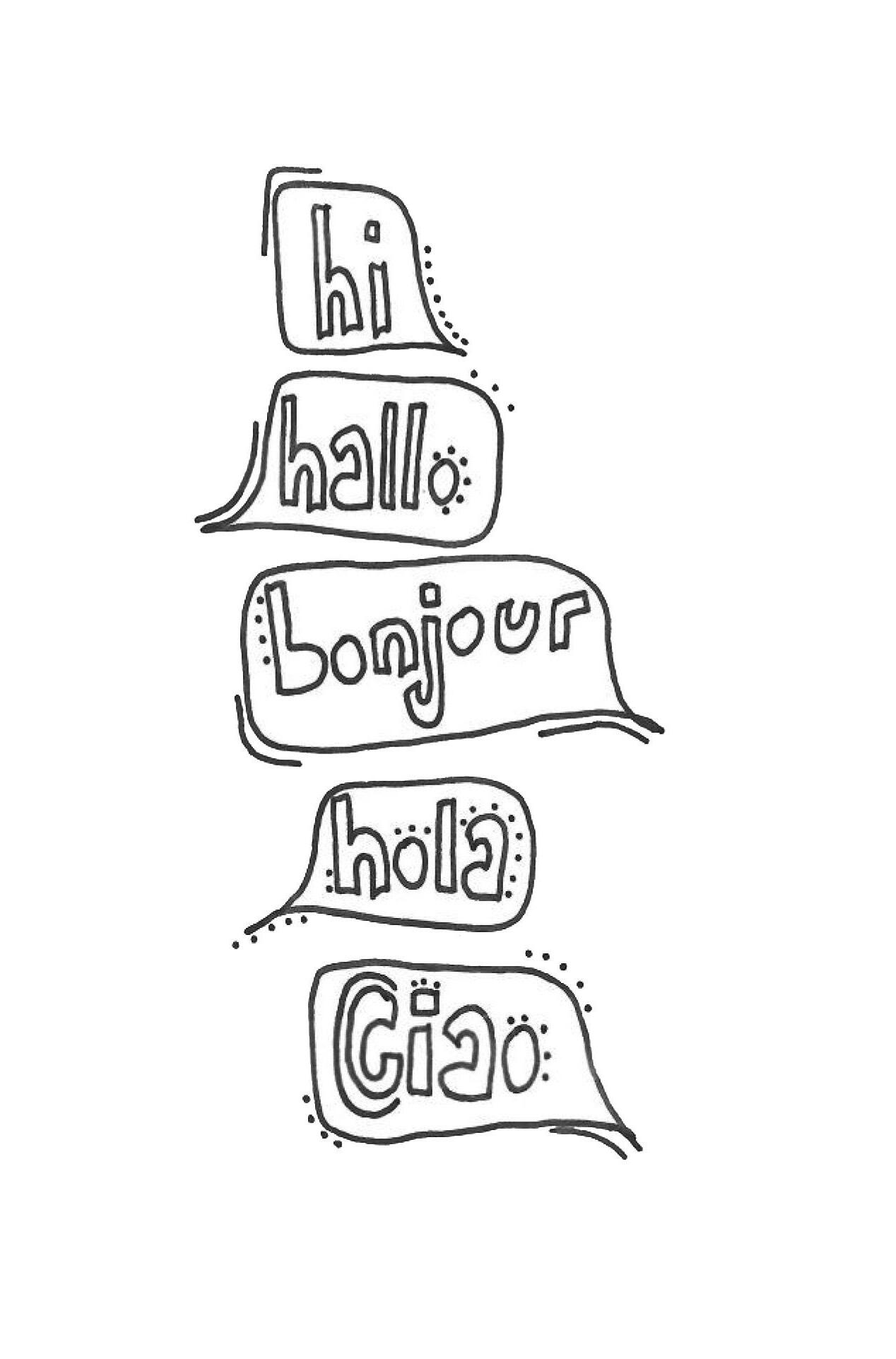
Bibliography
Caritas Migrantes, Dossier Statistico Immigrazione 2012, 22° Rapporto, Pomezia, Idos Edizioni, 2012.
Maffia M., “Nuovi Italiani”, in Proceeding of “Etica, immigrazione e città. Uno sguardo sulla Napoli che cambia. Napoli, 25 Ottobre 2011”, in press.
MIUR, Linee guida per l’accoglienza e l’integrazione degli alunni stranieri, Roma, 2006.
Ministero della Pubblica Istruzione, Osservatorio nazionale per l’integrazione degli alunni stranieri e per l’educazione interculturale, La via italiana per la scuola interculturale e l’integrazione degli alunni stranieri, Roma, 2007.
Tosi A., Dalla madrelingua all’Italiano. Lingua ed educazione linguistica nell’Italia multietnica, Milano, La Nuova Italia, 1999.
Marta Maffia is a PhD student in Acquisitional Linguistics at the University of Naples “L’Orientale” and L2 Italian teacher at the Association
“Scuola di Pace” of Naples
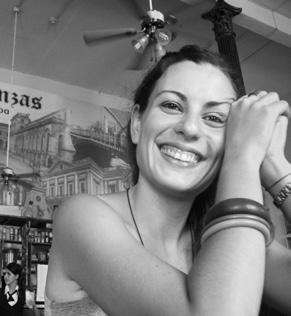
47 Mozaik 31
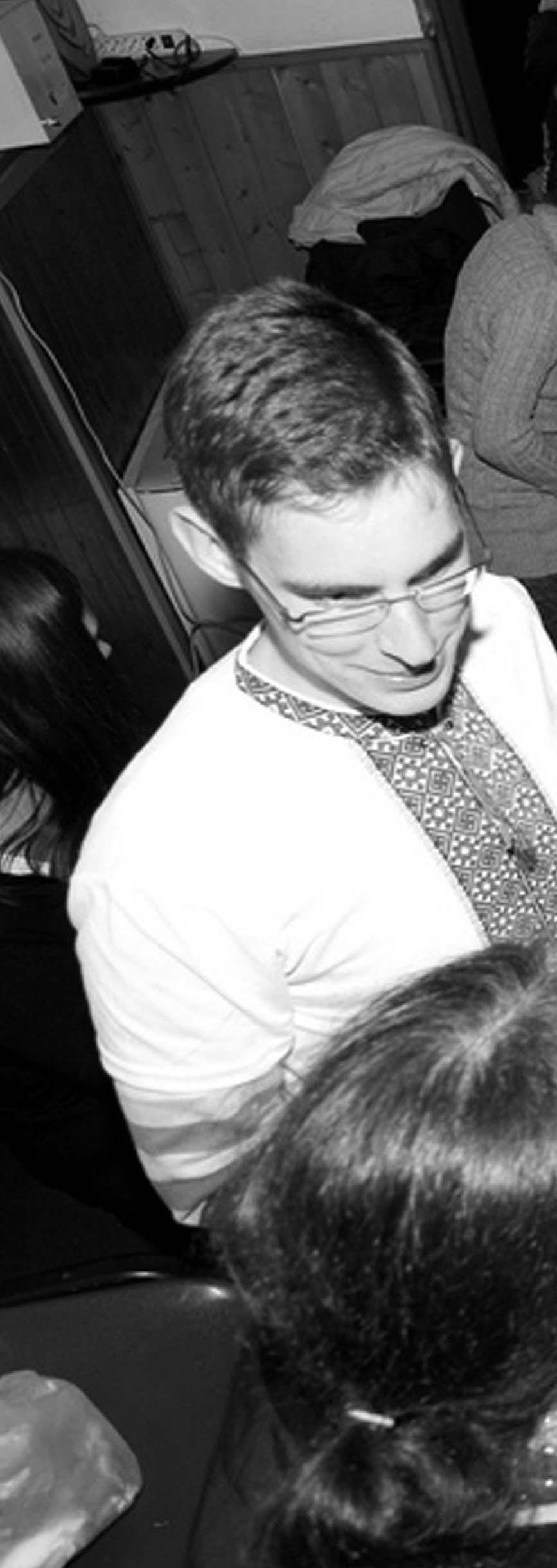
48
happy and powerful do not go into exile, and there are no surer guarantees of equality among men
poverty and misfortune. Alexis de Tocqueville, Democracy in America 50 Central & Eastern European SCM Training – Viliam Latta 52 How is it to be in a Preparatory Committee? – Annika Foltin 56 Like a Paddington bear – Nino Kurtanidze 58 Refugees and the Future of Europe – Jos Kofijberg 62 Green Toolbox is available NOW!
3 | Federation The
than
Paulius Sakalauskas
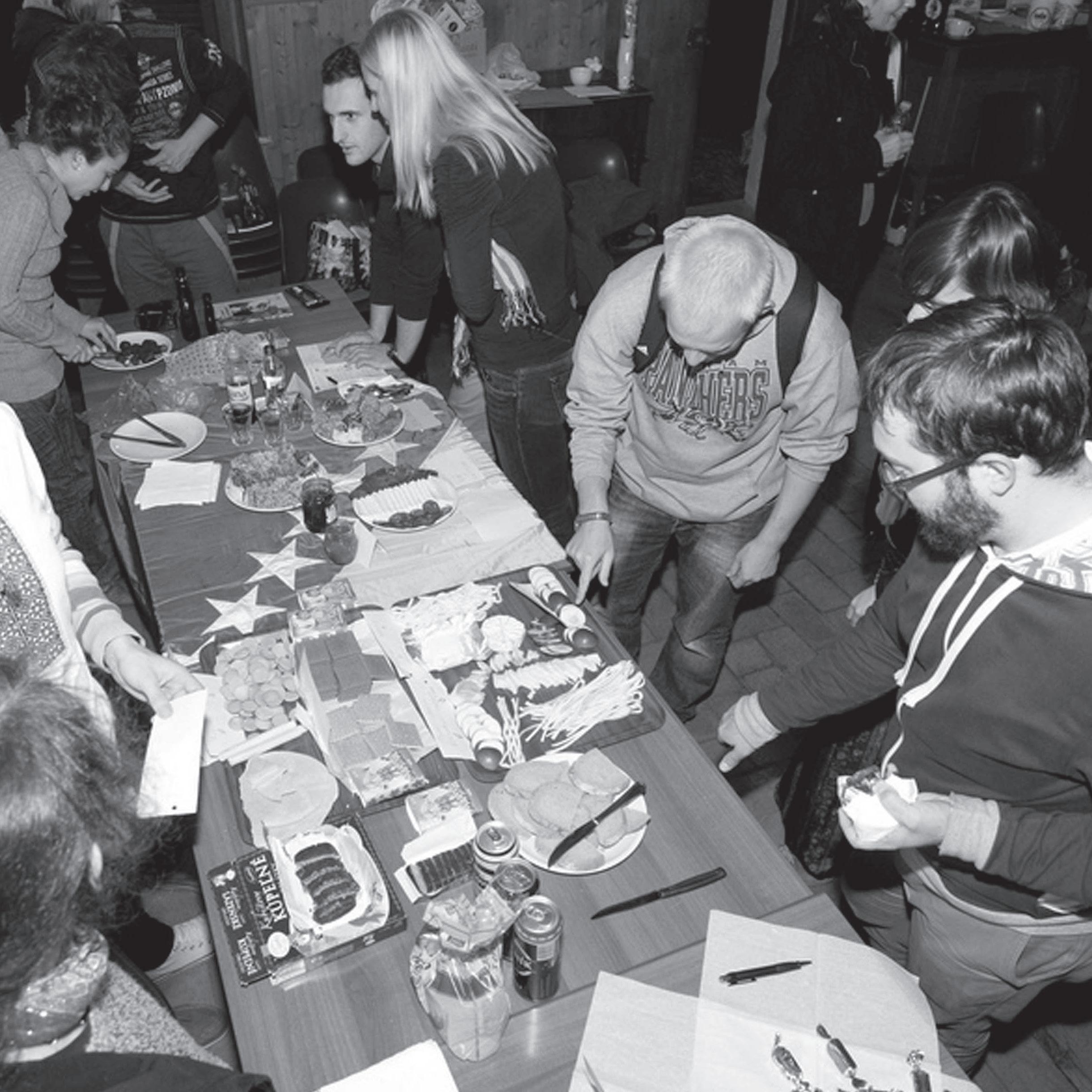
Sharing!
Viliam Latta
Central & Eastern European SCM Training
On 14th of September around 15 young people gathered in Białystok, Poland, for the annual Central European Subregion (CESR) of World Student Christian Federation Europe (WSCF – E) capacity building training.
Białystok is a town near to the Belorussian border. It is also the centre of the Polish Orthodox Christians and their youth movement, which is spread over the whole country. A group of young people from Polish Orthodox Student Christian Movement (SCM), headed by Marta Całpińska, hosted a very colorful spectrum of nationalities: from Macedonian and Hungarian through Slovak, Czech and Polish to German, Belarusian and Finnish. The whole event was only a weekend event, but the contacts from there are to be maintained for many more weeks, or maybe years.
The main goal of the workshop was to strengthen the national SCMs through improving capacities of their members. Discussions on various topics and exchange of experiences were integral parts of the program, as well as ecumenical prayers and common meals. We have discussed the topics of fundraising, new ways of communication, vision and mission of our SCMs, local, national and European level of cooperation and many others, not always stated in the official program.
50
On the arrival day we gathered around Hans Hommens, the WSCF-E regional secretary, for a round of small selfpresentations and getting to know each other. A range of churches representatives took part in the meeting: Orthodox from the east, Catholic from the central Europe, Evangelic from the west and other Protestant from the south of Europe. But still, as a Catholic, I’ve been really pleased to see other denominations gathering together for the same prayer, the same faith, the same God.
On Saturday we presented our local SCMs and their relationship with WSCF-E. Many of the participants have already participated in previous events held by WSCF and their movements are already known in the Federation, but not all of them. To a detriment of the Catholic Church in Slovakia, the Student Chaplaincies, core organization structures of the Church in the country for students, are not interconnected or connected to other churches. It means all the good things happening are limited to the Catholic students are not offered common ecumenical growth. I consider these limitations as an issue of isolation and this should – as time moves on – be reduced. Honestly, I have realized how important it is to be open and willing to build cooperation among people. People are usually the source of ideas, which can evolve into much bigger projects helping not only their members, but also people around them.
On the last day we participated in an Orthodox service held in a nearby church. The songs, prayers and readings were putting us in a meditative mood full of mystery and presence of the Almighty. I have really enjoyed to be drawn into the prayer and the praise of the Creator in a very new and special way. Eventually, in the evening it was rather difficult to say goodbye to each other; the time we spent together has been enriching and intense.
I will say one of the major contributions of the event was getting to know each other. In the SCM where I come from, the activities are usually oriented towards students
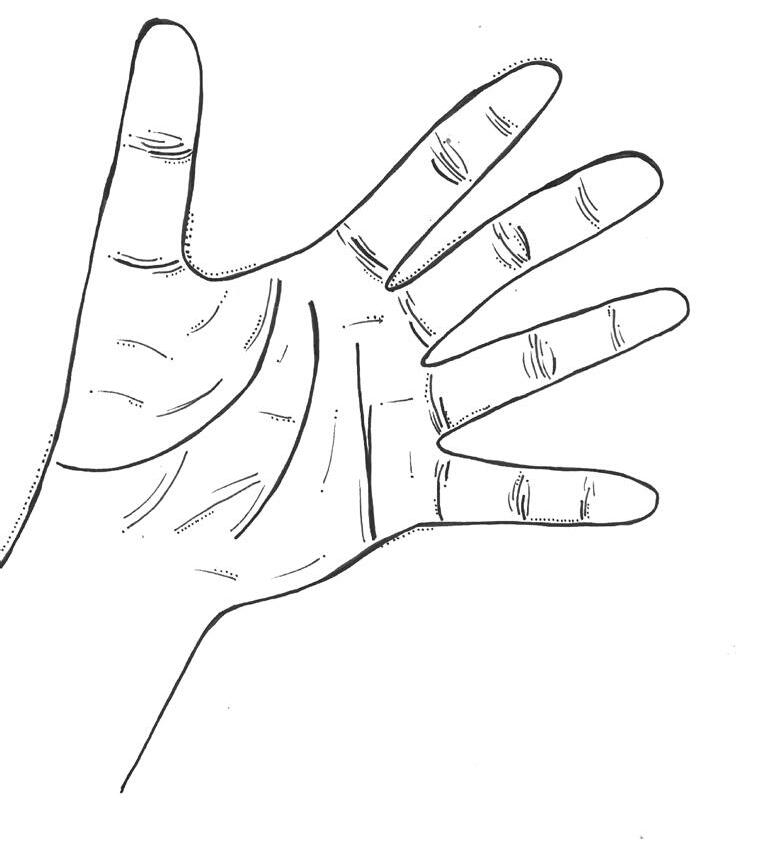
who come to the city for their studies. But to be open involves not only to exchange views on different topics, but also to offer the spiritual support, new ideas and friendships. Personally I consider this weekend event as a gift of broadening ecumenism and would recommend it to any other who is genuinely devoted to Christ’s Church. The whole event was organized by WSCF Europe together with the Polish Orthodox SCM, Bractwo Młodzieży Prawosławnej. �
Viliam Latta (Slovakia) studied Tourism and Banking systems at the Matej Bel University in Banska Bystrica and European studies at the University of Lorraine. He was a leader of Student chaplaincy in Banska Bystrica in 2008/2009 and a member of the Diocese Youth Centre at Spania Dolina from 2007 to 2012, where he took a course for work with children and young people in the Christian communities. In 2012 he participated at conferences organized by WSCF in Bialystok and Velletri. Nowadays he’s living in Belo Horizonte, Brazil.
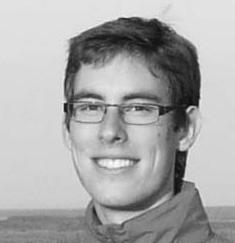
51 Mozaik 31
Annika Foltin
How is it to be in a Preparatory Committee?
Since my first WSCF-E Conference in October 2011, I wanted to become more involved in WSCF-E. So I went to the conference last spring in Bratislava to get some more experience. After this conference I knew I wanted to be in the Preparatory Committee (PrepCom) for the upcoming event in Italy. Not only because I have a personal background to this topic but also I love to work in a team and to organize such events.
Once my application has been accepted, the next step was to book my overnight trains for the first PrepCom meeting in Velletri, Italy. I was so excited to go and to meet the other team members! When I finally arrived in Velletri, I met with Márta, Hans, Josef and Jill. Together we had a wonderful time. It was not only the really nice, hot Italian weather that kept us going on and the cheerful children that were laughing and screaming during the meals. Children who were drawing little hearts on our blackboard… but also the team, which after the end of the meeting developed as a great group.
After the three days we had a full schedule and we knew what our tasks were and how we would go on from there. Together with Márta I was in charge of reading the applications and we decided who would be accepted and invited to take part in the conference. I loved reading all these wonderful applications. But of course, the most interesting part for me was when I met the participants finally in Velletri for the conference.
52
Preparation of an event involves always several Skype meetings. We have had them almost every week. We were discussing the program and we were trying to find the lectures to make the schedule as perfect as it could be.
After all the preparations we met two days before the conference started at the venue. In Velletri we were organizing everything to make the stay for the participants as comfortable as possible. We were getting up early and were going to bed late because last minutes changes accrued. All needed to be done before the participants arrived. Time was running!
The most exciting day for me was when all the participants arrived. It was rainy and stormy day in Velletri! Then the conference started and the venue was full of students who wanted to discuss the topic critically. For me the arrivals are always so interesting because people from all over Europe come and get to know each other. Even though they are representing different cultures and backgrounds they make friends quick and easily. The atmosphere of understanding beyond any borders always fills the room. The most stressful day for me was the excursion day, because I was in charge of it and I was organizing this
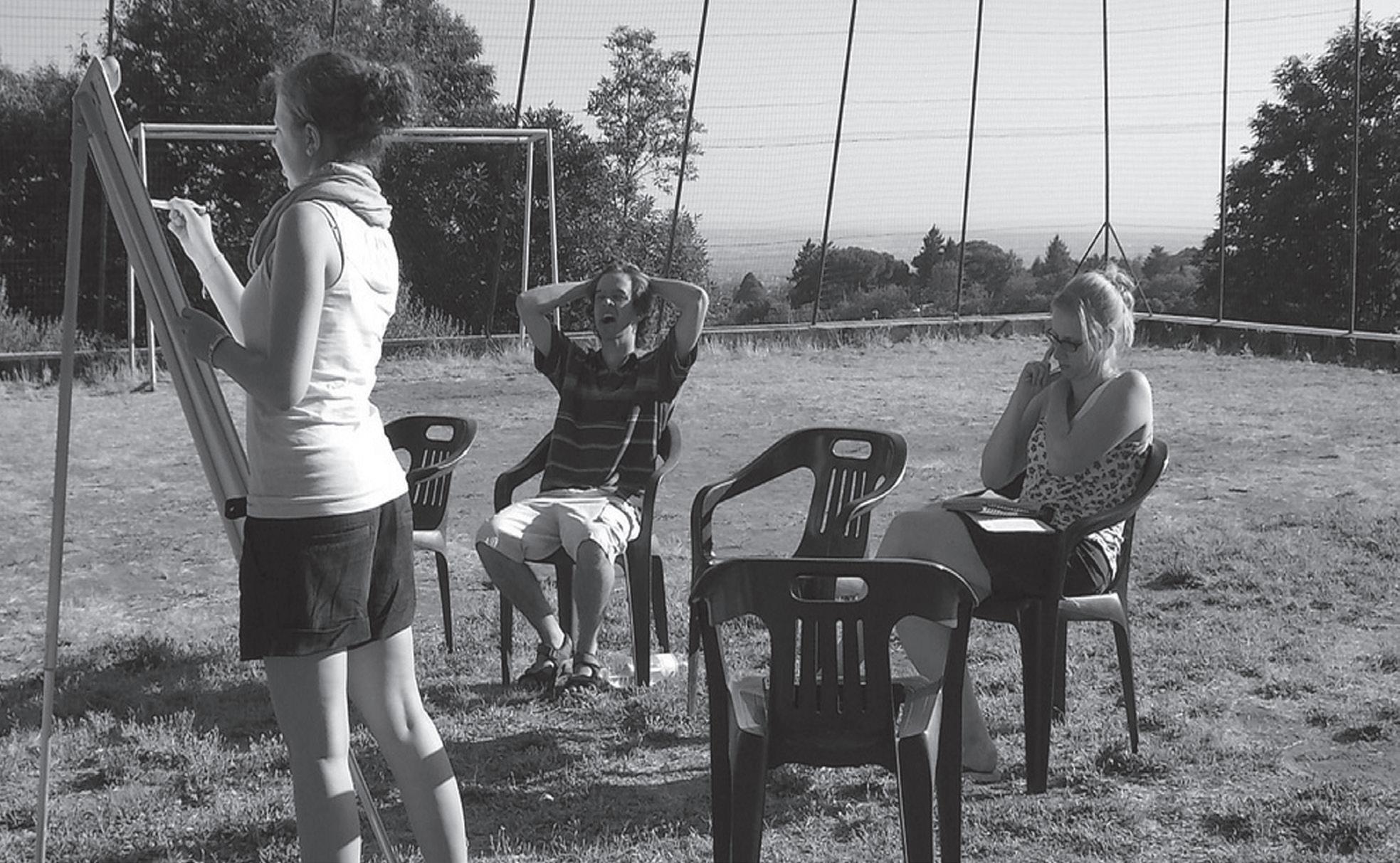
53 Mozaik 31
Annika presenting the schedule of the future conference during the Summer PrepCom meeting
Paulius Sakalauskas
day with the Hosting Committee (a group related to the venue that is helping with practicalities). Since the venue was an hour away from Rome, we wanted to go to the centre to see the city’s best. Even though I was stressed, I could really enjoy that day and after visiting the wonderful organization Sant’Egidio and see how much the participants liked the visit and how much they got inspired by their work, it was a great pleasure for me! And also that everyone came back to the venue without loosing anyone in Rome ;)
For me the PrepCom work was a great experience to get to know my skills and to make a great team building. I am a little bit sad that I could not join most of the lectures and I have to say sorry that I looked all the time so stressed and tired. Even if it did not look like that, I was really happy and I enjoyed the event so much!
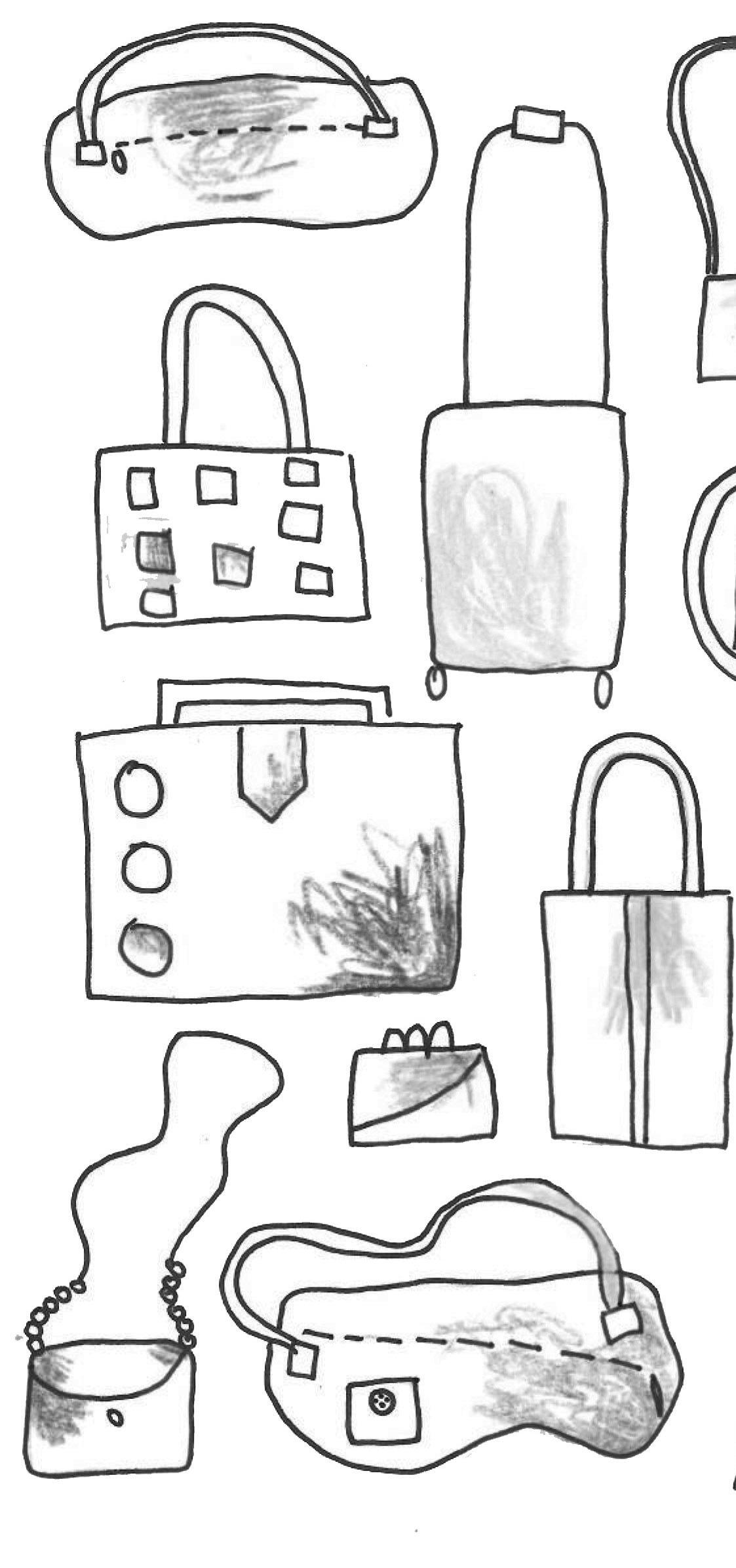
Overall I had a great time with the participants, the Hosting Committee and the PrepCom and I want to say thank you to all of you, who made the conference a great event! �
Annika Foltin is from Germany but she studies Jewish Studies and Science of Theatre, Film and Media in Vienna, Austria. Currently she is serving as a chairperson of the Austrian SCM. Annika’s heart fully pounds for the SCM and WSCF work. When she is not studying she likes going to the theatre, meeting with friends. Annika’s smiles are omnipresent!
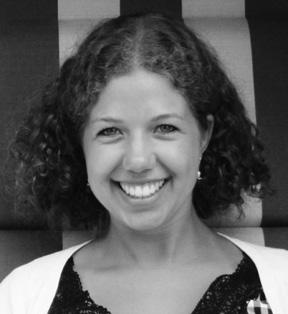
54
Initial brainstorming of the PrepCom.
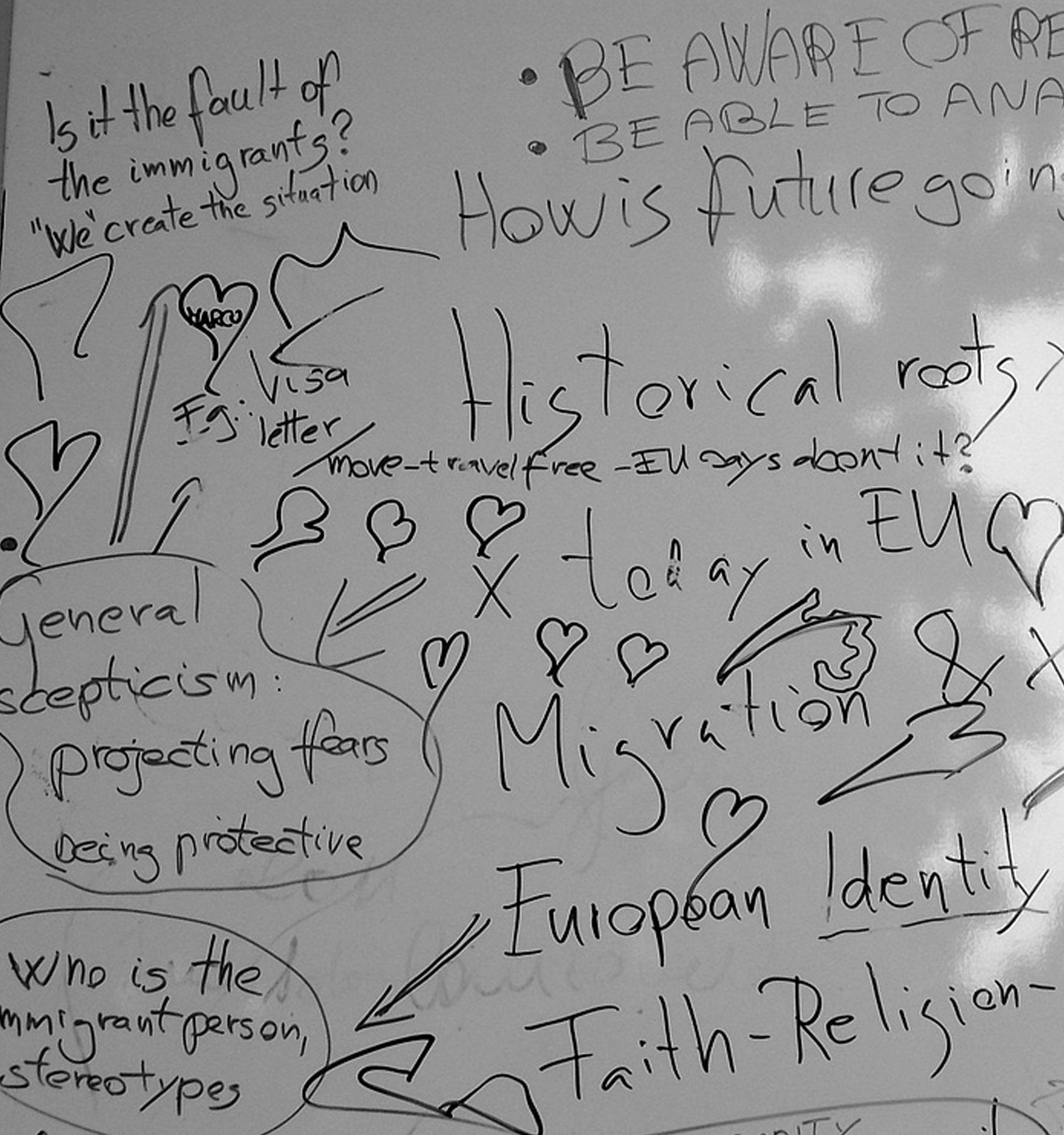
55 Mozaik 31
Paulius Sakalauskas
Nino Kurtanidze
Like a Paddington bear
People migrate all over the world hoping to find a better place to live. The global mobility, which increases with time, raises many issues. There are people, who believe that immigrants cause various problems. They make countries worse, make it difficult for natives to find jobs, threaten the countries’ culture and history. Some people experience this irrational fear towards foreigners, fear of losing their culture, language or social identity. Quite often these xenophobic attitudes lead to discrimination, and even genocide.
The popular stencil1 pairs a Paddington bear, a classic fictional character in English children’s literature, with the important message: “migration is not a crime”. This stencil first appeared in Bristol in 2007. It is still disputed if it was the famous graffiti painter Banksy who created it. Regardless, the pairing of an innocent Paddington Bear with a serious message leaves us thinking about the global issue, which still remains unsolved and unsettled.
Paddington bear goes through a long and dangerous journey in search of a better life like many other migrants. The story says he is sent to the UK from Peru by his elderly Aunt Lucy, who believes that his life prospects will be better abroad than in his homeland. He wears a little sign around his neck that states “Please look after

56
to
be
in Mozaik.
you to find it here:
1 Due
copyright regulations the stencil cannot
reproduced
We invite
http://www.flickr.com/photos/neilclark/3019390129/
this bear. Thank you”. The Brown family takes pity on the abandoned Paddington bear, takes him from the train station and brings him home where he soon becomes a vital member of the family. Although he has the curiosity of a child, Paddington has a strong sense of morals, which guides him through everyday life.

Migrants often experience many kinds of difficult situations. It might be hard for them to find a job, adjust to a new environment and people. Although there are various centers and organizations all over the world, which help migrants, the problem is still out there. Sometimes it is in us; it is not only about the statistics, politics, foreign policy or economic issues, it’s about humanity, about care and empathy.
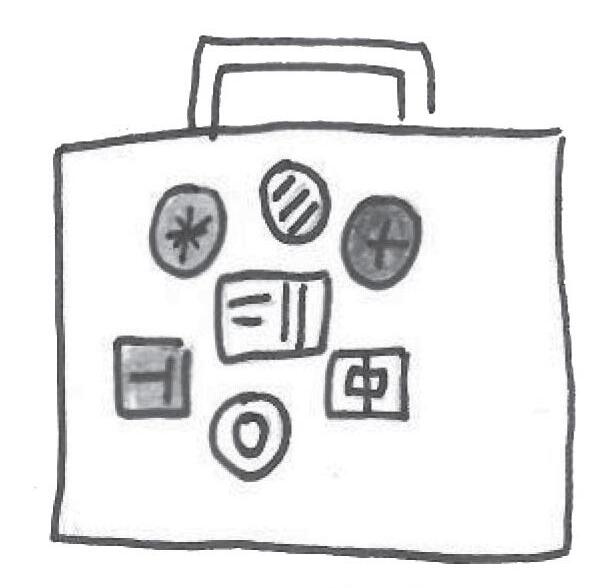
We all know who our neighbors are, but we do not always have a chance to travel to their home countries and meet people living there. Yes, we may know a lot about their traditions, culture, history, and so on. But meeting them face-to-face makes a big difference. When those countries that you have seen on the map become real, you realize that there are no physical borders and you feel a great source of energy that drives all these people to get together, to rise some questions, to find solutions to various problems, to collaborate, to cooperate; with a strong desire to change something, change for
I recall the last worship of the WSCF conference on xenophobia that took place in Velletri last year. It was really very inspiring. We held a thread in our hands as the symbol that we all are bound together. We really came to realize that we are all one in the face of God and we can change the world for the better and think more and take care more of each other and bear in our minds that everybody needs to be taken care of like that sweet immigrant Paddington Bear. �
Nino Kurtanidze was born in Tbilisi, the capital of Georgia, in 1984. She has studied Shota Rustaveli Theatre and Film University and on the faculty of Journalism. She works at Ilia State University Press as a text editor. Nino likes reading, writing, taking photos, travelling, and meeting different people.
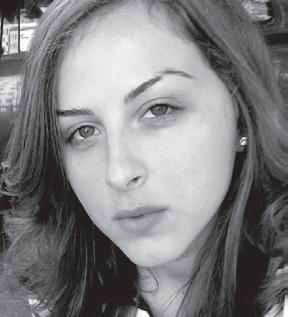
57 Mozaik 31
Jos Kofijberg
In 1992 WSCF organized jointly with Evangelischen StudentInnengemeinden (ESG) a conference that was related to some aspects of migration: The Europe of the Future in the Century of Refugees. As you can see, more than 20 years ago Europe was dealing with a very different reality than today.
Refugees and the Future of Europe
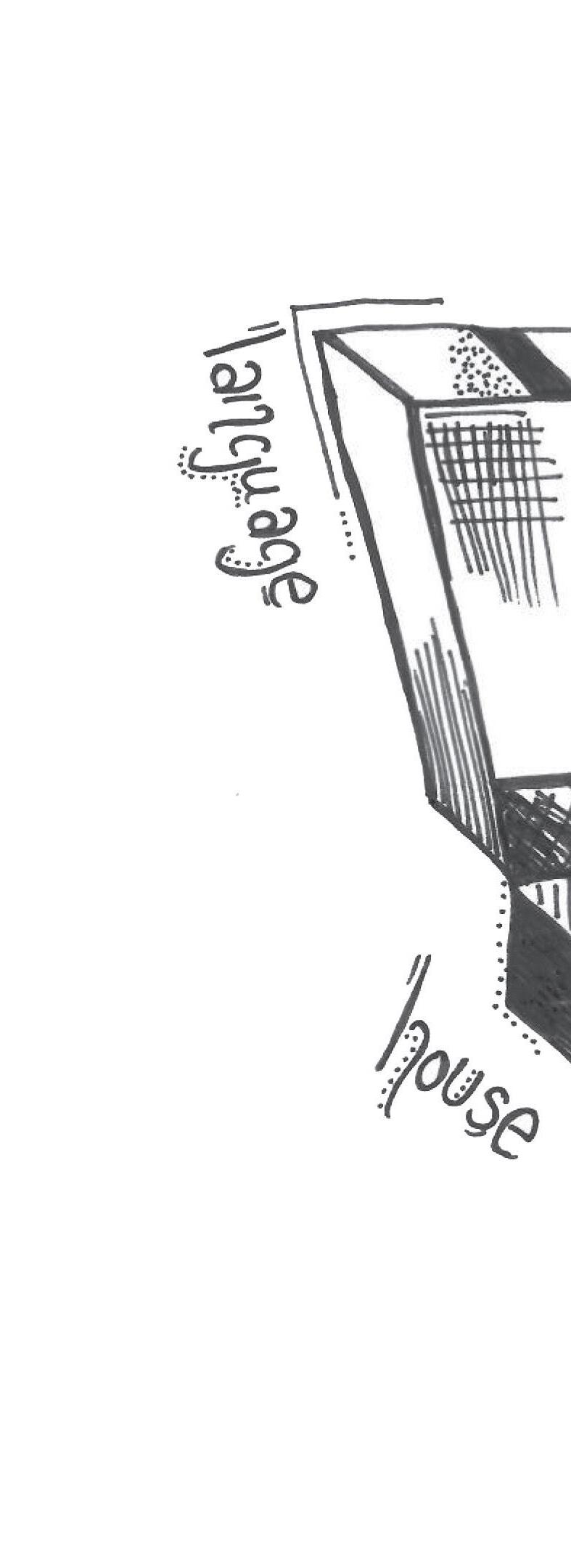
The asylum policy of the various European governments stands at the centre of the current public debate going on in this continent. In the now united Germany, it seems to be hottest issue of the moment.
Slogans like "Foreigners out!" versus "No expulsion of refugees!" decorate almost every street in the main German cities
and are indicative of the controversy surrounding the issue. Thus there was every reason for the central organisation of the (East) German ESG to devote its annual international autumn conference to "The Europe of the Future in the Century of the Refugees".
Some 25 participants representing seven different countries had come to Berlin to learn about and discuss the following sub-topics: the reasons for people to leave their country, the legal constraints regarding
58
By restraining admission and locking refugees up in asylum centres, politicians are rewarding the violent anti-refugee activities of the neo-nazis.
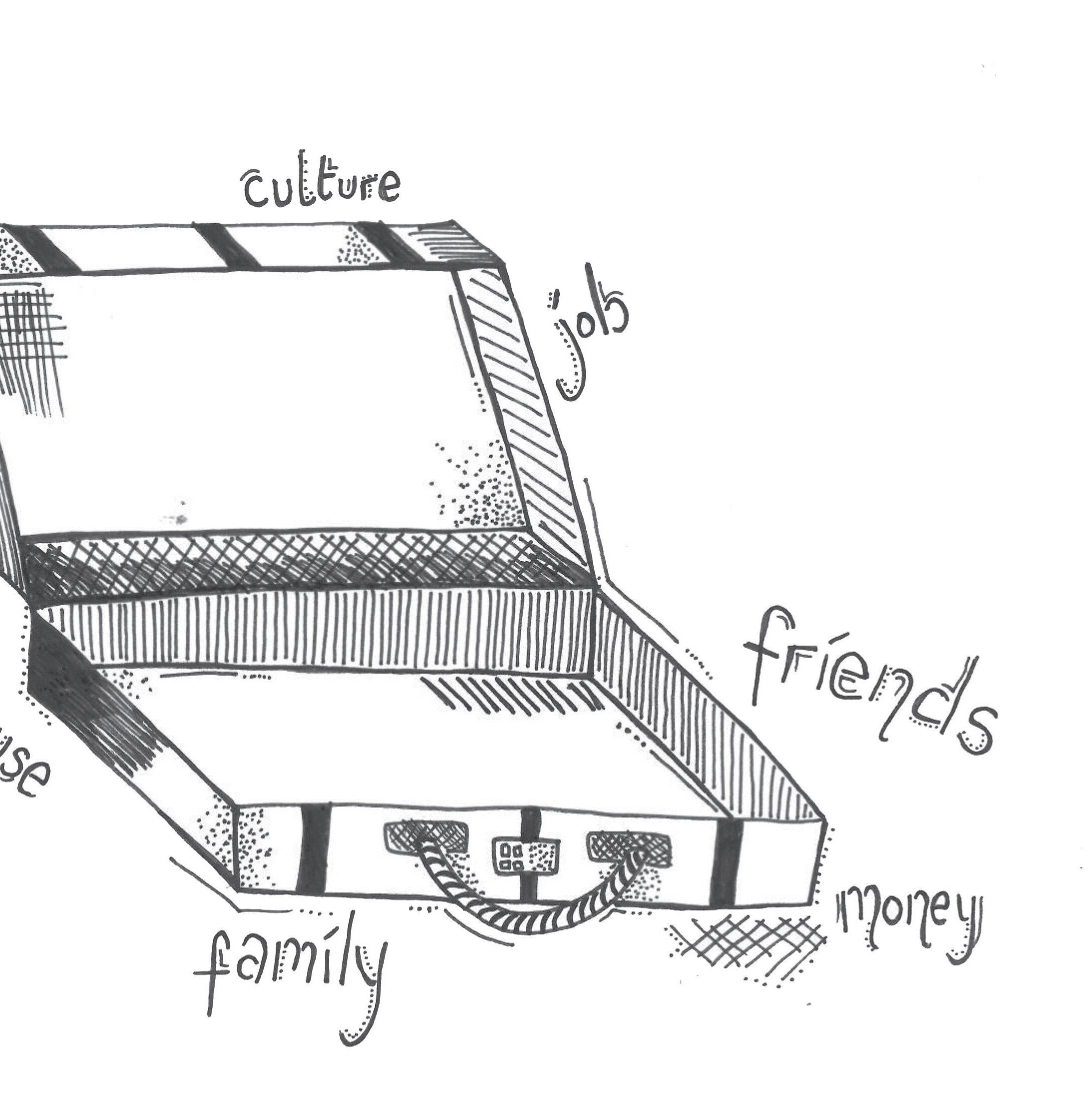
59 Mozaik 31
immigration in Europe, the tension between segregation and assimilation, and the way we approach foreigners ourselves.
Causes of the refugee problem
As the first guest speaker, Mr. Robin Schneider of the Berlin Institute for Comparative Social Research gave a very informative introduction on the refugee issue. The 1951 UN Refugee Convention defines a refugee as a person who, as a result of a well-founded fear of persecution because of his race, religion, nationality, his membership of a certain social group, or his political opinion, finds himself outside the country of which he possesses the nationality. As a social anthropologist, however, Mr Schneider adopted a less restrictive view towards the term 'refugee'. In addition to human rights violations, the main reasons for people to take to flight have been bad economic prospects, environmental degradation, and wars.
caused many people to leave their native region. What is needed is a system of prevention, rather than cure, such as the new UN 'early warning system'. They aim to detect as soon as possible if and where the conditions arise that will cause people to flee. It appears to be a very welcome document as it is based on prevention; legal instruments such as the refugee convention are concerned with people that have already fled.
European hospitality?
What about Europe? How hospitable are we vis-à-vis refugees? Since World War II, Europe has developed from an emigration towards an immigration continent. But are we really 'overflown' by 'enormous numbers' of refugees, as the extreme and also the not-so-extreme Right want us to believe? In 1990, the FRG hosted some 150,000 refugees; by contrast, a Third World country like Pakistan had more than 3 million refugees within its borders! Though I do not intend to deny the recent growth in the number of people seeking asylum in the EC, these figures indicate that the situation in Europe is not as dramatic as many newspapers and politicians pretend. Yet, why are Europeans so unwilling to admit more foreigners into their countries?
Since 1945, most wars have taken place in the so-called Third World. It is also there that the largest numbers of refugees can be found. According to Mr Schneider, the most fundamental cause of these wars is the present system of nation-states. This system has forced the indigenous people of Asia and Africa to live together within artificially created boundaries. They have been subjected to the authority of a state, which is usually dominated by a particular ethnic or religious group. The non-recognition of this dominance by other groups has already given rise to many a bloody war, and has thus
In her lecture, psychologist Mrs. Ute Osterkamp of the Free University in Berlin strongly rejected the idea that hostility towards foreigners is a natural, innate characteristic of German/European people. She reproached the main political parties for fostering this idea. By restraining admission and locking refugees up in asylum centres, politicians are rewarding the violent anti-refugee activities of the neo-nazis. According to Mrs. Osterkamp, however, the real cause of the hostility is the existential uncertainty confronting many Europeans. There is a psychological mechanism which means that people do not put the reason - and thus the solution - for this uncertainty with themselves, but with others, with
60
What is needed is a system of prevention, rather than cure, such as the new UN 'early warning system'.
foreigners. The government should use this insight and try to reduce the existential uncertainty of the citizens. If the hostility against foreigners is to be eliminated, it will be more fruitful to create jobs than to create tightly closed asylum centres, Mrs. Osterkamp explained.
Exchanging thoughts and experiences
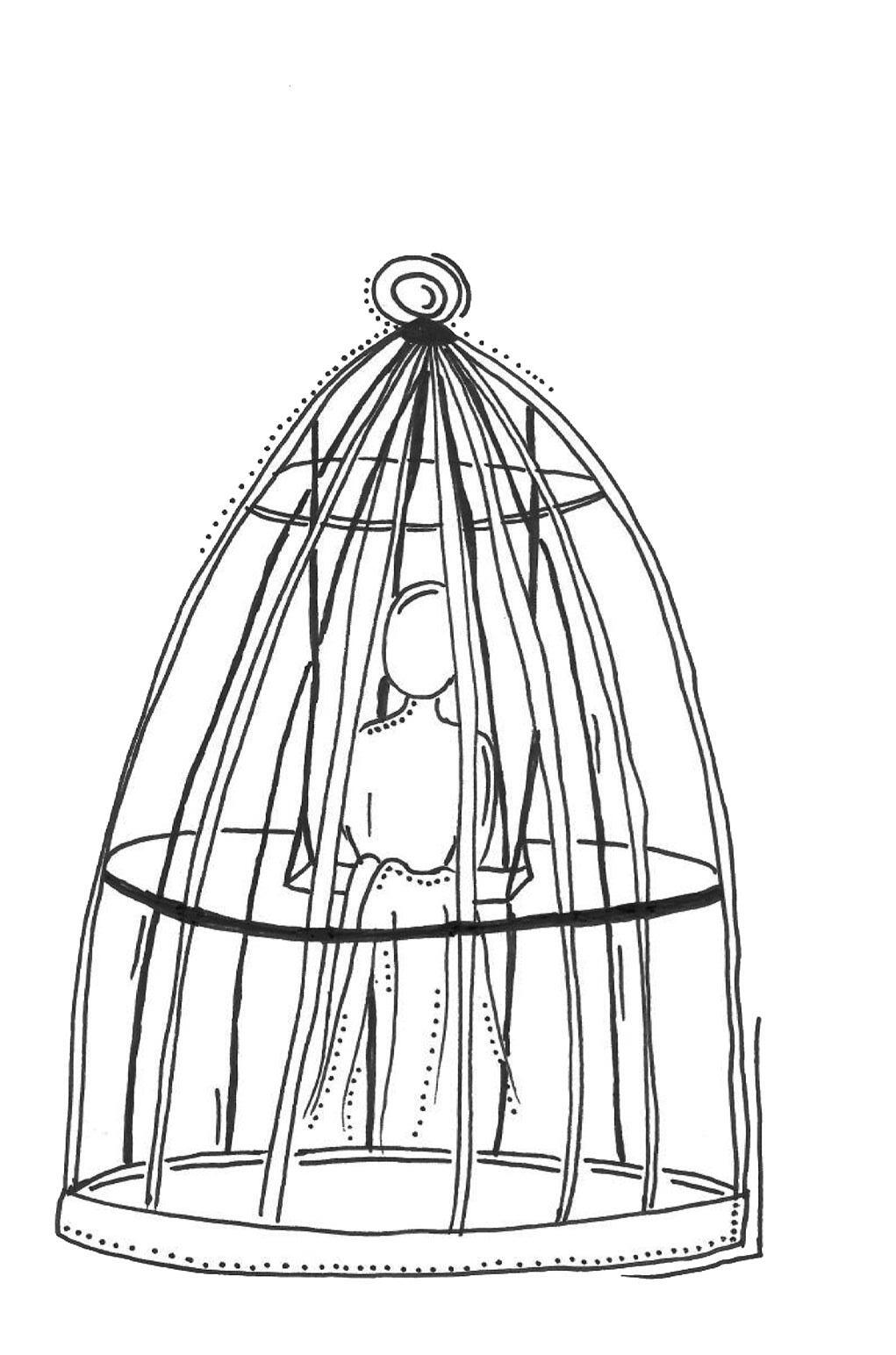
In addition to lectures and discussions, the conference also included a thematic tour through Berlin. We visited the Technical University, where volunteers provided refuge to a group of fifty foreigners who had been mistreated by neo-nazis in the town of Hoyerswerda. In Kreuzberg, a Berlin district where one third of the population has a Turkish background, a visit was paid to a multi-cultural café for refugees. We also attended a solidarity party in a centre run by Turkish immigrants. There we had a chance to make contact with refugees themselves. This experience was not only very instructive, everybody really enjoyed it as well!
The 'refugee problem' appears to be quite encompassing and complex; three days of conferring are far too short to obtain a thorough insight. And yet, in addition to the luxury of having spent several days together in a remarkably good atmosphere, the conference has at least provided us with a greater awareness of the importance of the issue and the questions raised; for it is on the answers to these questions that the face of the Europe of the 21st Century will largely depend. �
61 Mozaik 31
Text was first time published in Mozaik 2/1992.
Green Toolbox is available NOW!
International Young Naturefriends together with WSCF-E and Homo Ecos produced a publication that broadly tackles the issues related to everyday sustainability.
Green Toolbox encourages and inspires various sector organizations to apply sustainable working practices in their daily work and within their project and office management. It responds to the questions ranging from how we can choose the most environmentally friendly merchandise and gadgets to most socially responsible banking for our organization; what office and project management practices can do most good and least harm for people, natural environment and animals.
- We are thrilled that GTB is finally out! What makes it even more special is continuous feedback we are receiving from its users on how beneficial it has been for their organizations! – saysIlzeJece, Secretary General of the International Young Naturefriends, who was leading the editorial team.
The group of young authors is planning practical dissemination of the GTB’s content through workshops. Now, you can download the publication for free!
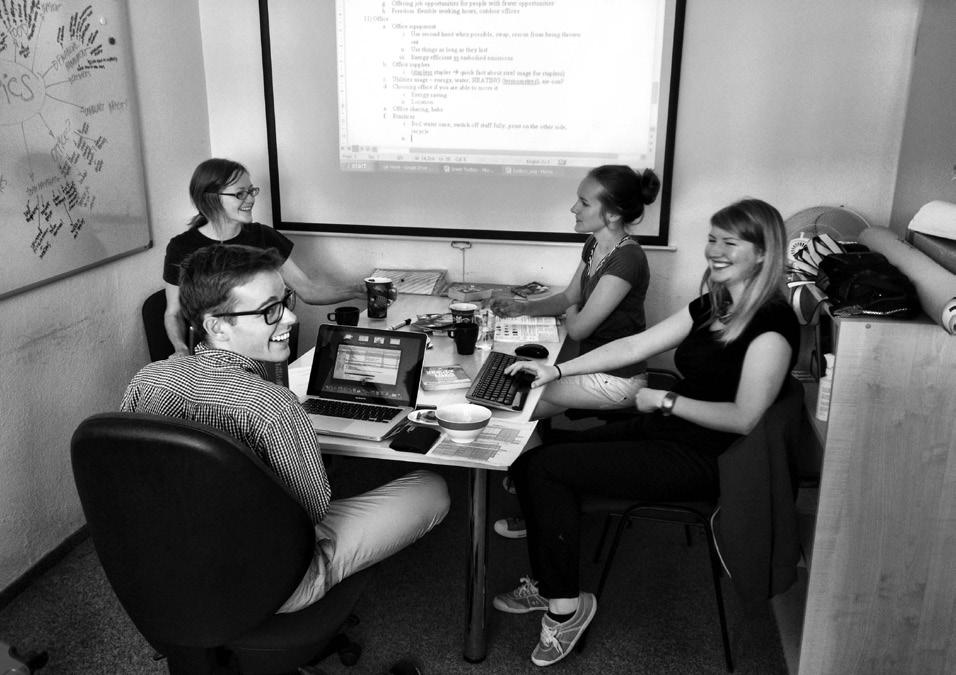
The publication can be ordered from IYNF and it is free of charge. Only postal costs of Euro 5 should be covered by
the subscriber. You can download a pdf version as well: http://www2.iynf.org/downloads/publications.
Green Toolbox is a result of a project “Road to sustainability! Green toolbox for sustainable youth organizations” that was kindly supported and financed by the European Youth Foundation of the Council of Europe, The Visegrad Fund, Youth in Action Programme of the European Commission and Naturefriends International. �
62
SOURCE
The Green Tool Box Editorial Team in IYNF in Prague, September 2012

63 Mozaik 31
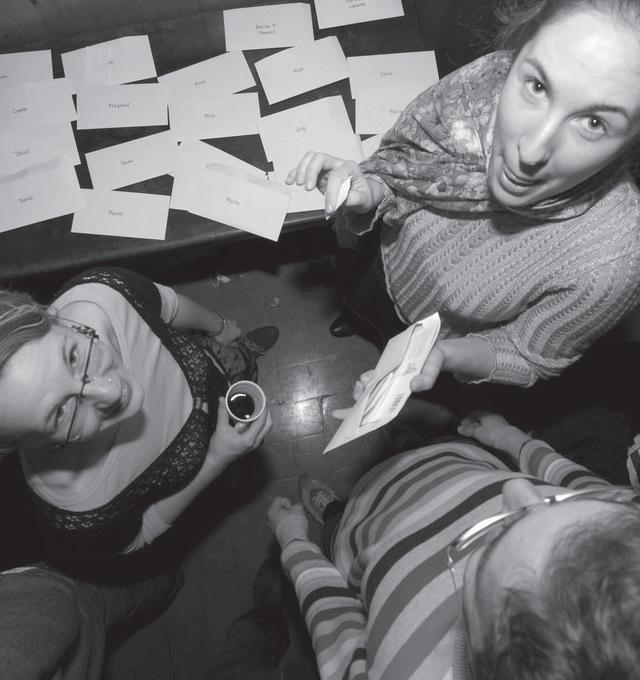
64
Discussions and wine.
(UK)

My name is Rebecca Foster and I am currently in my final year of art school in Manchester, UK. I love going out with my friends, drinking coffee and having lazy weekends visiting art galleries and walking in the parks
When thinking about the themes of xenophobia and migration I split my ideas into different areas looking at the journey people make when moving to a new country: leaving your home country, getting to your new home and arriving there and trying to make sense of this new place you will be living in. Alongside this I also thought about the different opinions of people that live in your new home be it good or bad. This covers a whole range of topics from ignorance about other cultures to the fear of simply saying hello to your next-door neighbour.
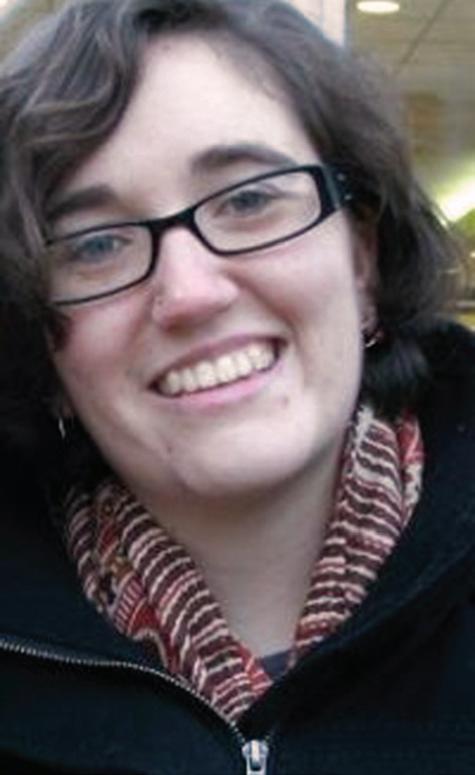

2013/Solidarity












 The last night in Velletri.
Csaba Szikra
The last night in Velletri.
Csaba Szikra





























